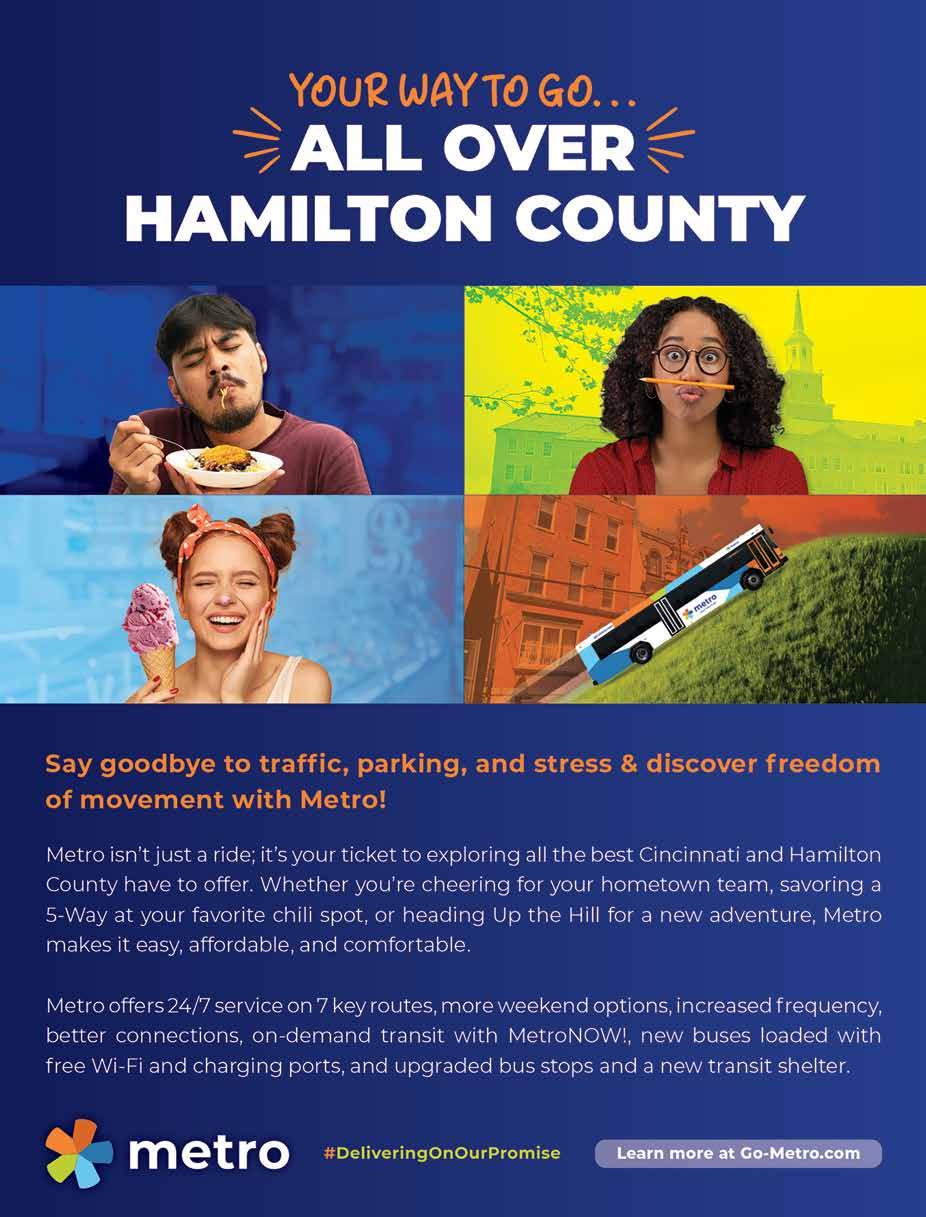
























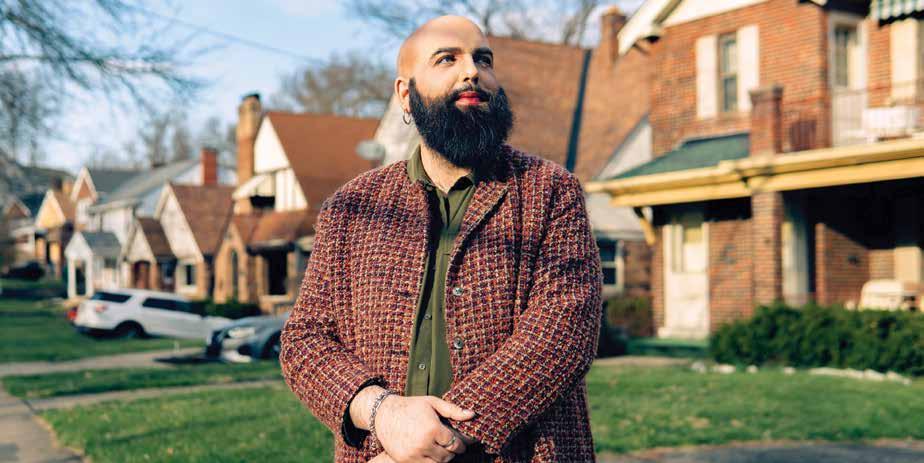
From bassoon to brain surgery to bridging education gaps – Sol Kersey’s journey to council candidacy is full of twists.
BY MADELINE FENING
During our interview at Fable Cafe in Westwood, Sol Kersey wore a screaming bright pink graphic tee that said, “The moral panic is about me!”
And they’re right – Kersey’s story begins as a transgender kid growing up in the South. Scared, yet motivated, Kersey has been through hell and back to reach the point where they’re at right now: Cincinnati’s first openly transgender candidate for City Council.
Kersey is already endorsed by LPAC, the only organization on a mission to elect lesbian, gay, bisexual, transgender and queer women and nonbinary people. One of dozens of candidates for Cincinnati City Council, Kersey stands out, not only for their historic campaign but for their approach to politics that is based on an origin story you have to sit in a coffee shop for nearly three hours to believe.
This interview has been edited for length and clarity.
CityBeat: If you had to tell me your origin story in a nutshell, what would it be?
Sol Kersey: My origin story is kind of wild. I grew up in the Tennessee River Valley, right outside the Great Smoky Mountains, and I grew up under
the auspicious eye of the Southern Baptist Convention, which, as a queer transgender person, makes for a very interesting childhood. I went through a conversion therapy process, through the Southern Baptist Convention. It was very difficult, and music was my escape. I was actually a professional musician before I entered the legal field.
I was a professional bassoonist. Double reeds all the way. I started getting paid to play professionally in sixth grade. You know, I hate sounding like an asshole, but I was really good. I got out of East Tennessee because I was so good. I actually wound up going to Interlochen Arts Academy for my senior year of high school. That is a fine arts boarding high school up in [Interlochen], Michigan.
Getting the scholarship to go, getting the community support from East Tennessee to go – there were people who knew me instead of the me I presented to East Tennessee and knew that I needed to get out.
CB: Had you already come out at this point?
Kersey: I knew I was some kind of different from second grade, like very clear to me. I tried [to come out] in high school, and that didn’t go over very
well. That led to the conversations with the church and all of that and led to me going back in the closet for quite a while.
CB: So after Interlochen, I’m assuming you started undergrad?
Kersey: Yes, I got a full ride to CCM, [University of Cincinnati College-Conservatory of Music], and it was wonderful. I loved it.
CB: Was this your first introduction to Cincinnati?
Kersey: It was. I had a friend who I went to Interlochen with, and she was from Cincinnati, actually, up in West Chester. I had visited the summer before I started at CCM.
CB: How did your parents react to this new step in your life?
Kersey: About nine months into my undergrad, my biological mother was like, ‘You need to come get your shit next time you’re in Tennessee,’ and I beat her to the punch and went down and got my shit. That’s why I say I’ve been on my own since 17. When I went to Interlochen, I was financially on my own. When I started out at CCM, I was financially on my own. I was paying my own car insurance, my own health
insurance, my own rent, the food on my table. It was hard fighting with UC to recognize me as an independent student so I could qualify for in-state tuition. It was a nightmare.
CB: But did it work out?
Kersey: About a year and a half into my undergrad, I wound up being diagnosed with a type one Chiari malformation. It is a congenital skull deformity, so my skull didn’t develop out and down enough in utero. And so in your early twenties, when the brain reaches full-size development, it begins to herniate out the opening of the base of the swell. It wasn’t great.
CB: How did you find out your brain was beginning to herniate?
Kersey: Started just passing out. My roommates came home and found me just passed out on our deck, and the next thing I knew, I was in [Good Samaritan Hospital], like, ‘Hey, your brain’s about 8 millimeters outside of your skull.’ And so I had brain surgery at 21.
CB: And you had just started separating your life from your parents – who was your support system at this moment?
Kersey: I went back to Tennessee and was originally going to stay with my grandparents, my biological mother’s parents, who were good people. They tried what they could with the tools they had for their age and their region to bring the family together. Didn’t work. I ended up living on the floor of my biological mother’s bonus room above her garage; I had to drag a mattress up the stairs by myself and put it
on the floor so I would have something to sleep on. She didn’t believe that [the brain surgery] was necessary, or that I was being honest about the need for it, until we were in the surgery consultation. It was very hard. It really shaped my understanding of disability and how we care for other people.
CB: After your surgery, did you return to CCM?
Kersey: Once I got my diagnosis, I withdrew from CCM and UC. My surgeon was like, ‘hey, you know, we cut through four inches of muscle on the back of your neck, and I can’t [...] with good conscience, say, yeah, go ahead and try to pursue being a professional musician.’ You know, I was playing eight to 16 hours a day, so it was hard. I mourned it. I still do, at times.
CB: With your future as a concert bassoonist snuffed out, where did you decide to go?
Kersey: I wound up transferring to Northern Kentucky University because I knew I wanted to stay in this area. I knew that East Tennessee wasn’t home. I look at it all with gratitude, because coming back to Cincinnati and trying to just stumble forward and figure out what my next step was actually [led me to meet] my husband in my undergrad. I switched [my major] to Organizational Leadership and he introduced me to Gender Studies as a field, and I wound up transitioning my minor from Japanese Language and Culture to Gender Studies. I was like, ‘Holy shit, I have the vocabulary to talk about all the things that I think and feel and have experienced now.’
CB: How was that transformative for you when looking at your life and your experiences in hindsight?
Kersey: It contextualized my life and helped me understand that what I’ve experienced and what I’ve gone through isn’t okay, and it’s not right, and unfortunately, there’s nothing that can make it right, but that is the living part, right? Because we have to figure out how to deal with things we can’t make right. I was looking at my life in hindsight with that newfound knowledge. That’s what drove me to get my master’s in Women’s Gender and Sexuality Studies.
CB: Where was that?
Kersey: I went to UC. I applied and I had a terrible undergraduate GPA. I actually just called the department head at UC and I was like, ‘Hey, I want to do this. You’re gonna see my application, it’s gonna look weird. Grades are gonna look shitty, but I’m the real deal. Can you give me a chance?’ And they did.
CB: You also went to UC for law school – how did your Women’s Gender and Sexuality master’s program prepare you for law school?
Kersey: I still remember my first semester course, Foundation of Feminist Theory, and there are moments in that class that truly changed and shaped my life. At the time, I knew I wanted to go to law school, and I didn’t want to go in there and not have a honed and sharpened feminist social justice lens, not have the context, you know? Because I remember in my first semester [of law school] taking criminal law and having my professor at the time ask the class, ‘Why do we think manslaughter was invented as a legal offense or a crime?’ And I was like, ‘Well, because men kill their wives and they needed something lesser than murder.’ And he was like, ‘Exactly.’ And there were people in that room that looked like I had slapped them in the mouth. I had the luxury of going to law school as an adult, right? There are a lot of students who [...] are going through law school, [who] haven’t really experienced what it means to be an adult in the world. I went into UC law as a Social Justice Fellow at the Jones Center for Race, Gender and Social Justice, and I took that very seriously. That was probably the most important thing I did in law school was to have the backing and the support of those involved with the Jones Center. And I would also say the National Lawyers Guild chapter at UC Law was also something that kept the wind in my sails. Because when I got there and that first year, I was like, you know, I feel really alone. I feel like I don’t fit here. I need to mask who I am. The more I kept at it, the more I connected with folks who were like me and who wanted to use their [Juris Doctor degrees] as tools for social change.
CB: You then went on to work for Kimberlé Crenshaw, one of the founding scholars of Critical Race Theory (CRT) and the first to introduce the concept of intersectionality. What did you work on?
Kersey: I was a legal fellow, and I was researching at the time what we were referring to as the 1.0 and 2.0 antiCRT bills, which has now morphed into what we can see as anti-DEI, anti-equality, anti-Blackness, antiqueerness. I started understanding these things at their genesis, and that has positioned me to be in a place where I can see the historical context of what’s going on right now. We had a combined event with the NAACP Legal Defense Fund (LDF) and the Williams Institute at UCLA Law. I actually went to New York City for this and was at the LDF
headquarters and watching us try to, in real time, document what is going on, strip it back to its bare parts so people can see what’s going on. It really taught me a lot about what it means to educate someone in this climate and about these topics, and it’s really a hallmark of what I consider the core of my approach to being a public servant and working in the nonprofit field.
CB: And you’re in that nonprofit space now with the Equality Ohio Legal Clinic. Walk me through your role there – what do you do?
Kersey: I am our intake coordinator. I am the first point of contact for virtually everybody that comes to Equality Ohio Legal Clinic seeking help. And I love it. It’s not necessarily the easiest job in the world to stare down the barrel of problems that queer people are facing on the daily, but to create and facilitate a soft landing spot for someone in crisis, is one of the greatest joys of my life. We assist Ohio members of the LGBTQ+ community [whose income is within 300% of the federal poverty level.] That’s the requirement for us to deliver direct representation or provide direct legal advice. We do family law, civil protection orders, name changes and gender marker corrections. We do some record sealing and expungement. We do some private insurance denials. We do some employment discrimination work. So we run a very wide gamut.
CB: Now we’ve reached the point in your life history where you’re running for Cincinnati City Council. Why did you decide to run?
Kersey: I’d always had an inkling in law school that it was something I could do. [Council] was something that I could do productively. Not just for me, but for my community, my neighborhood, my family, my friends.
CB: If elected, what would be your top priorities on Council?
Kersey: I’ve been telling people there are three core tenants that I’m running under with the first one being a large umbrella of the other two, which is social justice and human equity. We must have solutions rooted in equity and not equality, because equity is how we can all succeed and thrive. Equality is saying, well, we had the same starting point, sorry. And I think the difference between those two things is remarkably important. Under that large umbrella of human equity and access to justice is health care and housing. Those are two of my biggest concerns for the everyday Cincinnatian. Two adults working full time making minimum wage cannot
afford a two-bedroom apartment for their family. That’s unacceptable. That’s patently unacceptable. There is also, I think, [an] opportunity for us to deliver greater respect to our unions. I think labor is remarkably important, and as a proud union member myself, my husband is also a union member, labor makes the world go round. And I think that things like LPA’s and CBA’s – land project agreements and community bargaining agreements – are very important opportunities for Cincinnati, because that will dictate for land project agreements if we’re building something on the West End, top to bottom, everybody is labor and unionized. And when we look at the community bargaining agreements, we’re looking at, how is this work productive? How is this development going to impact the community, not just generally, [but] in a positive way?
CB: Housing is a huge pain point for lots of people in Cincinnati – there’s a supply shortage with high interest rates and aggressive landlords – what do you want to see Council do about bolstering opportunities for first-time homebuyers?
Kersey: I think that a huge thing that Council could do, which is no money off of the city’s nose, is a first-time homebuyer education program. I think for first-time homebuyers – and it’s not people’s fault, I didn’t know what [Private Mortgage Insurance] was before I had a mortgage. [...] But teaching people what PMI is, what does that even stand for? Teaching people that the state has first-time homebuyer down payment assistance. That’s something that [my husband] and I missed out completely on and would have changed the way we live our lives today had we had access to it. I see there are low-hanging fruit opportunities there, and I say that knowing that there are a lot of first-time homebuyers experiencing similar things that we did in the experience of buying our home and the experience of missing out on state grants and even federal grants, as long as they may still be around to provide assistance with things like this.
CB: Why should the people of Cincinnati vote for you?
Kersey: They should vote for me because I shouldn’t be running for council; I should be dead. And the only reason I’m not is because I live in Cincinnati. And the only reason I’m not is because the people of Cincinnati saw me for who I was in my entirety and let me be me.
Cincinnati voters will vote on council seats this November.

BY MADELINE FENING
Anew lawsuit filed against the City of Covington and two of its police officers alleges officers used excessive force against a “Black LGBTQ man” during a September 2024 traffic stop.
The civil rights lawsuit, filed March 19, comes from Damian Connor and his attorney, Jamir Davis. In a press release announcing the lawsuit, Davis claims officer Doug Ullrich, a 14-year veteran of Covington Police, unlawfully arrested and searched Conner’s vehicle, and that Connor’s case reflects a pattern in Ullrich’s career.
“This case exemplifies the routine abuse of power, where officers use unnecessary force and perform unlawful searches on individuals — telling them to submit now and fight in court later,” Davis said. “That’s exactly what we’re going to do.”
The lawsuit claims Connor was driving south on I-75 on his way to work when Ullrich pulled him over for a “standard communication device violation” – the lawsuit said Connor was “actively typing in his phone for directions.”
After being pulled over, Connor was compliant while talking to Ullrich, according to the lawsuit, providing his license, registration and insurance information. After running Connor’s information, Ullrich called for backup and waited for the second officer to arrive at the scene. When the unnamed officer arrived, Ullrich asked Connor if he was in possession of a gun.
“Mr. Connor, without reaching around, do you carry a gun, sir?” Ullrich says in body camera footage provided by Davis.
“What?” Connor asks.
“Do you carry a gun?” Ullrich says.
“I’m confused, [inaudible] can I-” Connor says.
“It is a very simple question, do you have a gun?” Ullrich says.
“Sir, I can’t answer any questions, I’ve got to get to work,” Connor says. The lawsuit says Connor was “confused why there was an issue” when Ullrich then told him to get out of the car.
“Take your seat belt off,” Ullrich says.
“For what?” Connor says.
“Take your seat belt off. I don’t want to have to rip you out of the car and take you to jail, so take your seat belt off,” Ullrich says.
“What are you taking me to jail for?” Connor says.
“I’m telling you I don’t want to, so take your seat belt off,” Ullrich says.
The lawsuit says Connor was “actively trying to de-escalate a
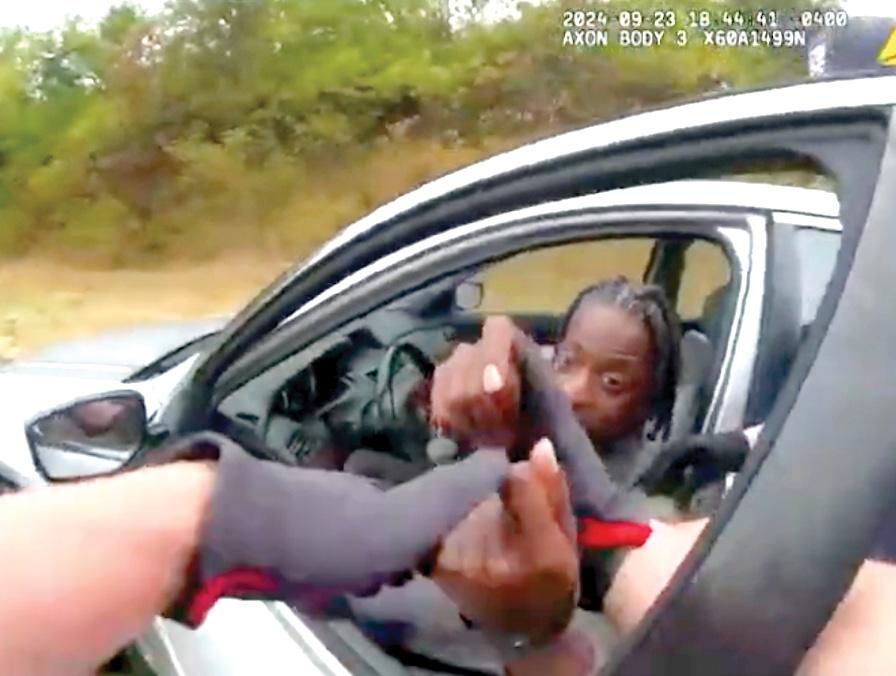
confrontation” when he asked the officer to explain why he had to exit his car.
Body camera footage shows Ullrich reaching into the car to open the driver’s door from the inside while Connor objects, appearing to reach for the handle to keep the door closed.
“You’re being ordered [inaudible], get out of the car,” Ullrich says while trying to open the door.
“I don’t want to get out of my car, stop, this is against my will,” Connor says.
“You are now under arrest,” Ullrich says.
“Why am I under arrest?” Connor says.
“You’re refusing to exit the car,” Ullrich says while placing Connor in handcuffs through the car window.
“Why do I have to get out of my car for a fucking ticket?” Connor says.
Ullrich and the unnamed backup officer proceed to open Connor’s door and cut his seatbelt.
“Why you gotta cut my seatbelt?” Connor asks. “Because you’re already in handcuffs and I’m not taking you out of handcuffs to fight with you on the interstate,” Ullrich says. “Step out.”
Connor appears to step out of the car without resisting, though he continues to verbally oppose the officers’ actions.
“This is so crazy, he’s arresting me,” Connor says. It’s unclear if he’s speaking to someone on the phone; he’s seen wearing wireless headphones in the footage.
“You pulled me over for what?” Connor asks Ullrich.
“For refusing to get out of the car,” Ullrich says.
“Why do I need to get out of my car?” Connor asks.
“Because your car stinks like weed,” Ullrich says. This is the first mention from the officer about suspicion of marijuana during the stop, according to the body camera footage.
“I don’t smoke weed, sir. I work for the railroad, I can’t smoke weed,” Connor says.
“Well, then you should have got out of the car,” Ullrich says while searching Connor.
Ullrich tells Connor he’s being arrested for obstruction, places him in a police cruiser and returns to Connor’s car to begin a search. Opening a backpack in the passenger seat,
Ullrich’s body camera shows him pulling a hand gun out of the bag.
“Oh, look at that, a gun,” Ullrich says. “Just like I thought.”
Connor is the legal owner of the registered gun, according to the lawsuit. Ullrich remarks that there are pills in the bag, which aren’t seen in the footage.
After the search, Connor’s attorney said he was transported to the Kenton County jail where he spent the night, facing several charges. Davis said all charges were dropped the following day.
The lawsuit claims that Ullrich has a “long history of wrongfully accusing African Americans of being intoxicated or smelling like marijuana as a means of initiating unconstitutional searches.”
There have been five civil lawsuits filed against Ullrich since 2021, with four claiming Ullrich conducted searches or arrests based on allegations of marijuana in a car. Three of these lawsuits are still active, one is in appeals and one is closed, according to court records.
CityBeat reached out to the City of Covington for comment but did not hear back by press time.
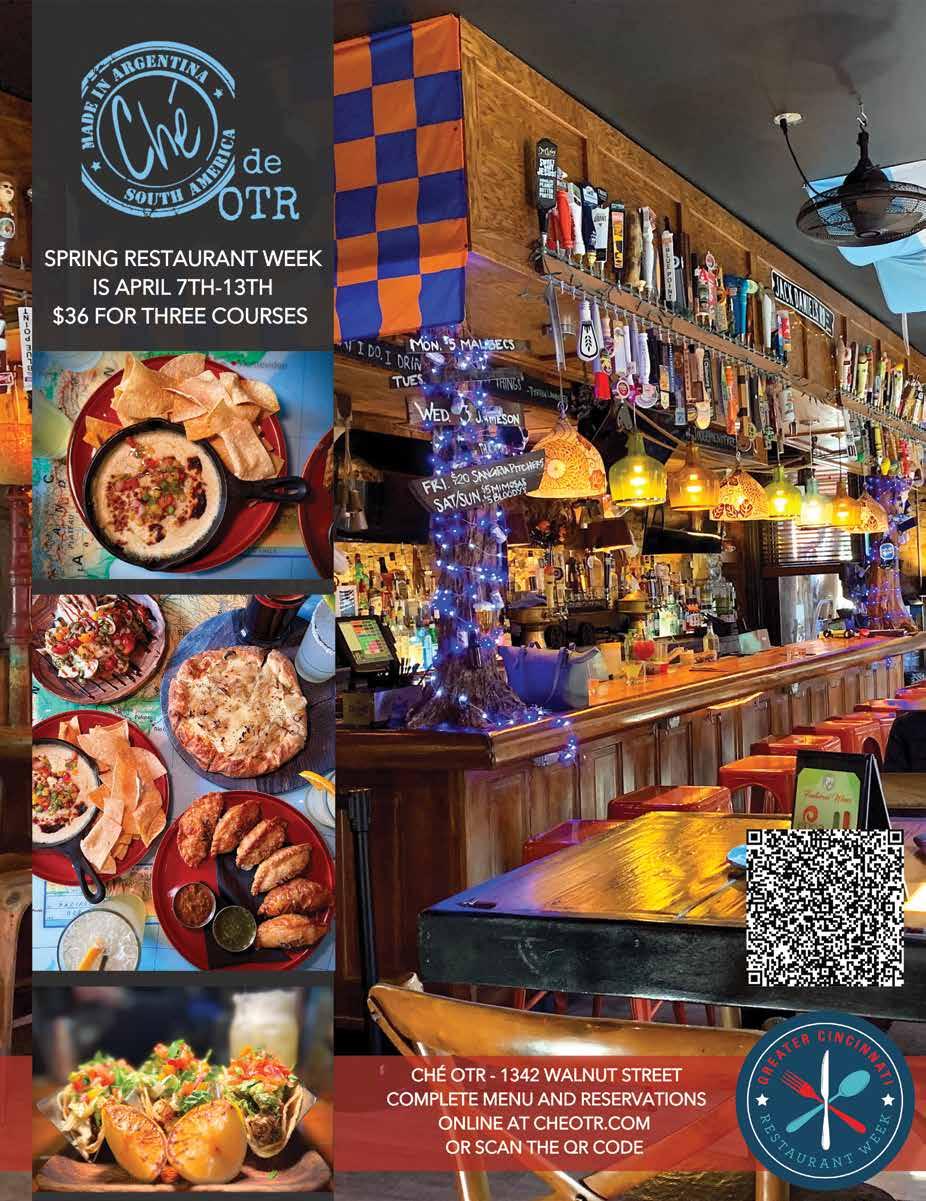
BY MADELINE FENING

Cincinnati Pride, the nonprofit organization behind the city’s annual Pride parade and festival, is parting ways with some donors as companies across the country begin to scale back DEI initiatives.
In a March 19 Facebook announcement, the organization said, “we cannot in good conscience continue to collaborate with organizations that work against our mission of providing the Greater Cincinnati LGBTQ+ community with resources to positively impact the lives of all individuals regardless of sexual orientation, gender identity, or expression.”
Organizers have stated they will not disclose which corporate sponsors are being cut out in 2025 – last year’s diamond-level sponsors were Procter & Gamble, Delta Airlines and altafiber – but Cincinnati Pride said the decision “means losing tens of thousands of dollars in funding.”
In an effort to recoup the loss, Cincinnati Pride has launched a fundraiser to support the 2025 festival and parade.
“Financial investments from individual donors within our local community will supplement the dollars given to us from corporate sponsorships,” the announcement reads.
As of March 25, Cincinnati Pride has raised $17,768 from 208 donors in an online fundraiser. Their goal is to raise $50,000.
“Your donation will ensure we can continue providing year-round programming for our community, including a free festival and parade for all LGBTQIA+ individuals and allies to attend, and continued financial support to local community organizations through our community grants,” the announcement reads.
Cincinnati Pride is still accepting sponsorships from corporations, but only from those with clear policies that reflect shared values.
“Effective for 2025, Cincinnati Pride seeks partnerships with organizations that are committed to honor and celebrate LGBTQIA+ voices,” reads an updated sponsorship guidelines page on the organization’s website. “These organizations should understand the positive influence of diversity, equity, and inclusion in the workplace and society. In support of this, we may request a copy of an organization’s LGBTQIA+ Non-Discrimination Policy.”
Companies big and small have started rolling back DEI programs and policies following veiled threats from President Donald Trump.
In an executive order rescinding DEI policies in the federal government, Trump also took aim at the private
sector. His order, signed shortly after his January inauguration, calls on companies to end “illegal DEI discrimination and preferences,” claiming DEI policies “violate the text and spirit of our longstanding Federal civil-rights laws.”
Many U.S. companies have already started to scale back DEI efforts, according to Forbes, including:
• Major League Baseball
• Warner Bros. Discovery
• Goldman Sachs
• Bank of America
• JPMorgan Chase
• Coca-Cola
• PepsiCo.
• Deloitte
• Target Cincinnati Pride is not the only Pride festival to be impacted by the changing corporate culture. San Francisco Pride, one of the world’s largest Pride events, announced it is seeking alternate funding after losing a number of corporate sponsors, according to the publication Them.
“The tone has changed in this country,” Suzanne Ford, the executive director of SF Pride, told KTVU about the $300,000 loss. “Businesses already hedge their bets, and I think people who, this isn’t their hard core value of their corporation, maybe they’re rethinking their investment.”
Cincinnati Pride will be held on Saturday, June 28.

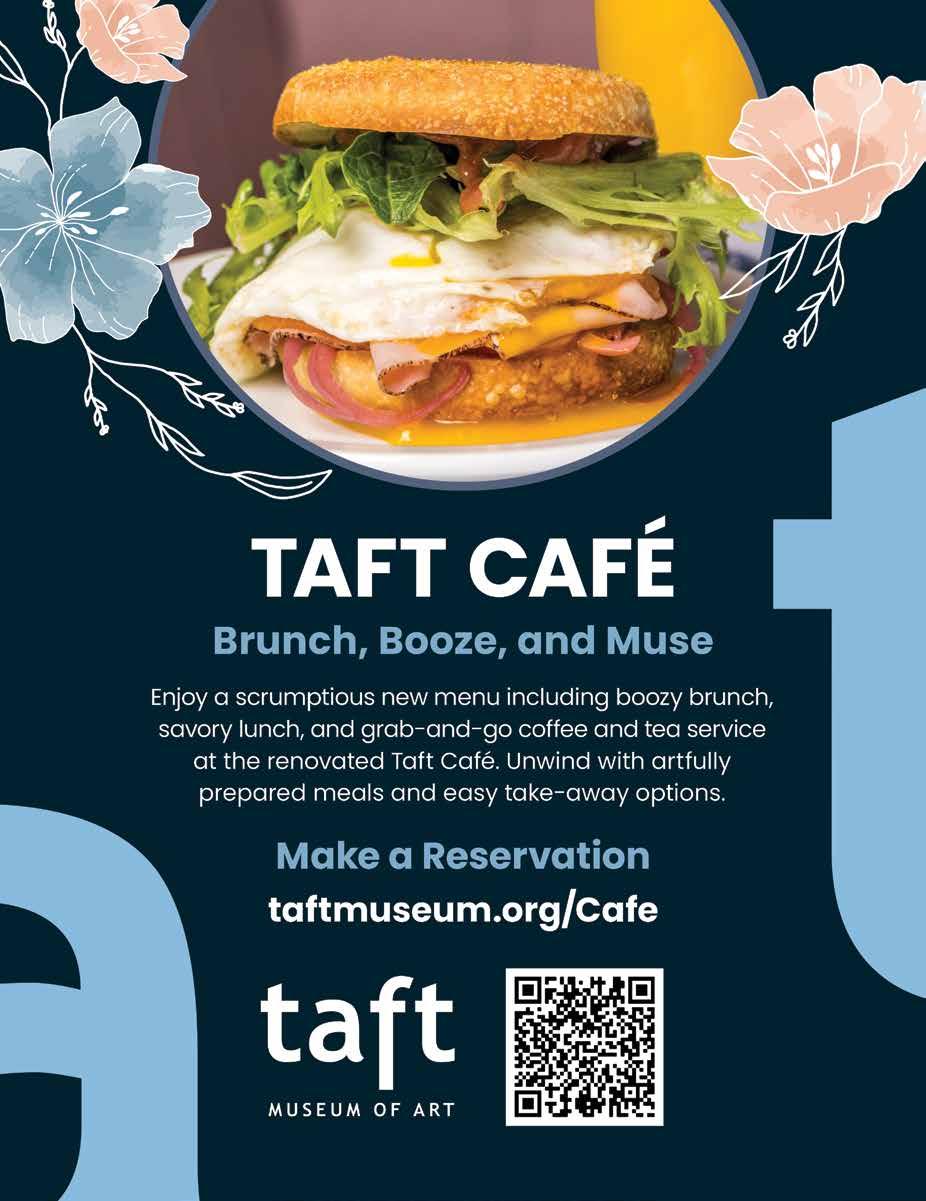
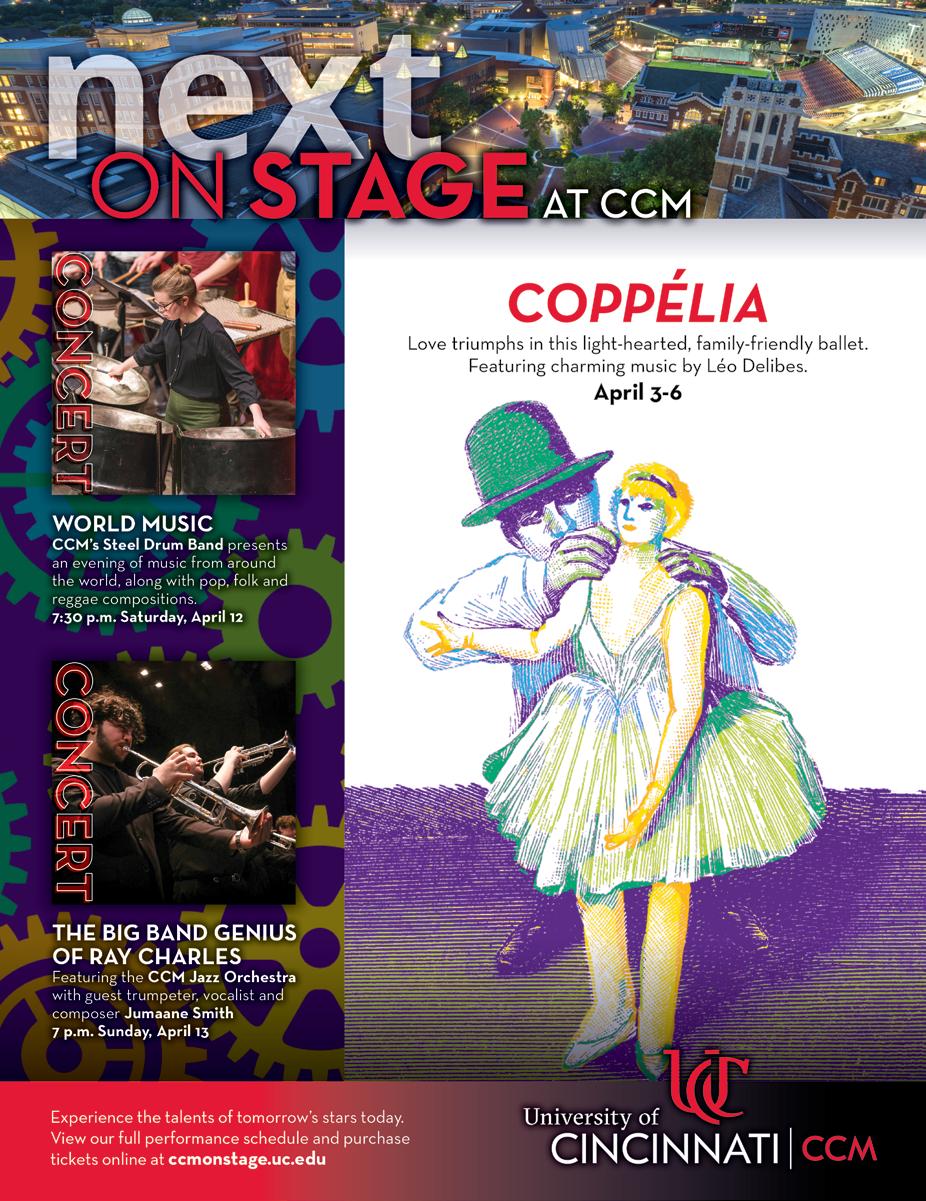


In his column, Bad Advice, writer Collin Preciado will be giving you the worst advice you’ve ever heard.
BY COLLIN PRECIADO
Dear Collin,
My partner and I have recently come to our first major disagreement on how to raise our girls (ages 2 and 4), and we’re having a hard time finding any sort of compromise. Our issue is how much screen time our children should be receiving a day. I’m of the opinion that children should have little to no screen time since it only seems to turn them into dead-eyed little zombies, and when the screens are finally turned off, they are irritable and cranky. To me, this seems like the excessive screen use is probably not very good for them. My husband, who stays at home with the kids during the day, says he has to sit them down in front of the iPad so he can make them lunch or clean the house or any number of things he says he has to do. The iPad is showing they’re using it a couple hours every day, and that’s not even including the amount of TV they’re probably watching. I’m worried all this screen time is going to scramble their brains and delay their development, but there’s not a lot of hard science I can show him to prove to him I’m right. My question is how do I make him do what I want?
Sincerely, Working Mom
Dear Working Mom, I don’t think it’s true that there aren’t a lot of studies on the negative effects of excessive screen time on children, but,
luckily, nobody cares about science anymore anyways. Now that the Department of Health and Human Services is under the thoughtful leadership of a whaledecapitating nepo baby who thinks COVID-19 was a bioweapon created by Ashkenazi Jews and the Chinese, we’re free to disregard any and all evidencebased science and just believe whatever we want to, and, personally, I believe screen time is really really, really good for little kid brains.
So, unfortunately for you, I’m with your partner on this one. Why bother putting in the effort to raise your own kids when YouTube and Bluey are right there to do it for you? There’s simply no way to raise kids without screens anyway. It’s never been done. It’s literally impossible. Now, right now, some lame nerd might be pointing out that, prior to tablets, parents had been raising their kids for hundreds of thousands of years just fine without employing the use of screen technology, and my counterpoint to them is that they can go fuck themselves. You only have so many hours in a day to stare at your own phone, and any moment spent engaging one-on-one with your child is less time you get to spend watching people pop pimples or deep-clean carpets. If anything, your kids should be getting more screen time. Even if they’re doing the simplest of tasks like getting a haircut, their face better be buried in
an iPad so they’re not bothering you or anyone else around them. Kids should never be seen or heard, and all they should be seeing and hearing is an endless video of the stupidest and laziest slop the internet can provide. These kids need to learn as quickly as possible that the only thing that really matters in this life are devices. The worst hour I’ve ever spent looking at my phone (reading my own column) was still a thousand times better than any hour I’ve ever spent with my parents. My childhood would have definitely been way more memorable had my parents just given me an iPad and headphones when we were out at a restaurant instead of teaching me how to behave in public. Who needs friends or social skills when you can just expose your brain to high-intensity light and sound all day? The key to a happy life isn’t meaningful human interaction; it’s screens. At least that’s what I have chosen to believe, which is my God-given right as an American.
Dear Collin,
Stoner Jim here. Read your new feature in Cincinnati CityBeat, an updated Miss Lonelyhearts. We’re now fellow travelers, riding this CityBeat wave… Welcome.
Slopmonster: Nathaniel West warned us a long time ago, “Oranges no longer titillate our jaded senses.”
Stoner Jim: “Bad Advice” has that noir feel and we have [redacted] working with us.
Slopmonster: Can you help guide us back to the Age of Aquarius?
Stoner Jim: We took a wrong turn and just kept going, as Springsteen suggested. Slopmonster: And, damn, here we are, a psychedelic Ball of Confusion. We’re looking for a miracle… Collin?
Sincerely, Stoner Jim and Slopmonster
Dear Stoner Jim and Slopmonster, Right on. I’m not entirely sure I have any idea what you are talking about, but I appreciate your vibe. I am slightly disturbed by the apparent comparison to Nathanael West, if only because he died at the same age that I am currently, an age that some older people may consider young. Don’t look it up. If you guys are reading this response in the same altered psychedelic state you were under when you sent me this email, the electric wolf with smoke eyes and black licorice teeth has asked me to provide you with a secret message: What goes on in the sea is of no interest to the rock, unless the rock is Dwayne Johnson, maybe.
Send me your unsolvable problem at badadvice@citybeat.com. What’s the worst thing that could happen? I’ll be sure to let you know.


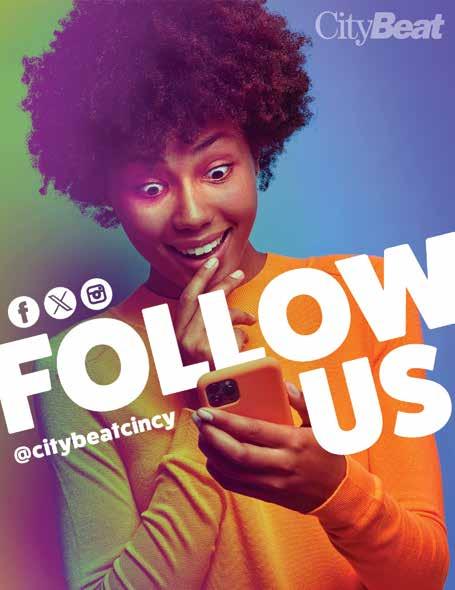
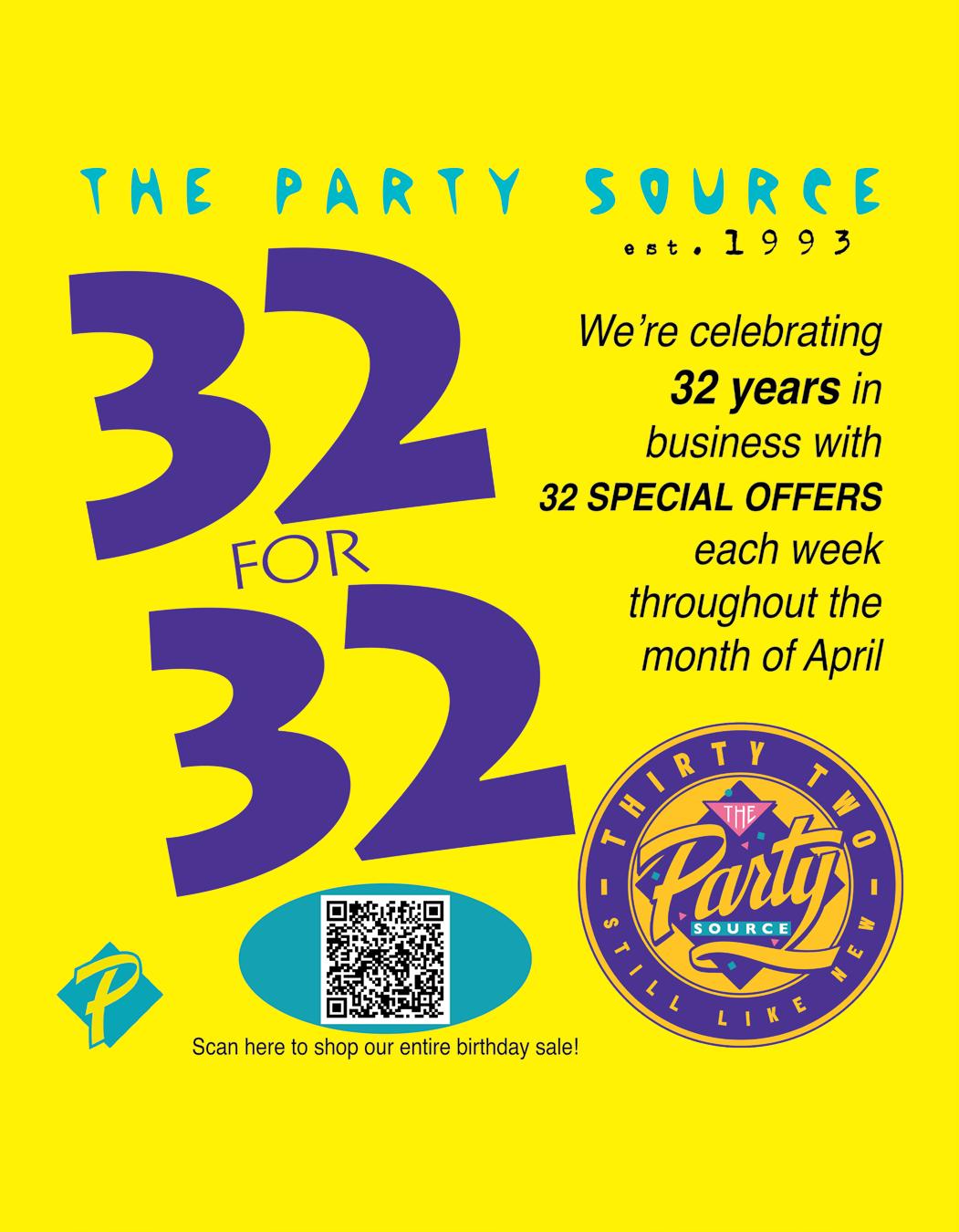
The next time you’re on Central Parkway between Walnut Street and the Western Hills Viaduct, go ahead and imagine the rumble of a train beneath your feet. This stretch of 2.2 miles is what remains of Cincinnati’s abandoned subway tunnels, a legendary piece of the region’s history and, some hope, a fragment of our future.
These tunnels are unique. There is no other known city in the world with subway tunnels that were constructed but never used. Empty tunnels are common enough, says Jake Berman, author of The Lost Subways of North America. There are partially abandoned tunnels, like that beneath Second Avenue in East Harlem, part of a plan for expansion that never came to pass. And there are subway systems that became abandoned after years of operation, like that of Rochester, New York, whose subway ran for nearly 30 years before it shut down. But Cincinnati’s tunnels have remained perpetually vacant.
“Cincinnati really is unique in that they built most of a subway system and just never used it for anything,” Berman says.
Although they are home to a 4-foot wide water main, some fiber optic cables and plenty of graffiti, whether or not these tunnels will ever be used as intended remains to be seen. Some public transit advocates say we’re sitting (or driving) on gold. Others think it’s unrealistic.
“I think a bike path would be the best, most possible [use],” says Nolen Wright, a local railway enthusiast who runs the Instagram account @ cincinnati_railways.
Last fall, the city of Cincinnati put out an RFI — Request for Information — inviting folks to submit ideas for repurposing the tunnels. Responses included everything from a bathhouse to a speakeasy.
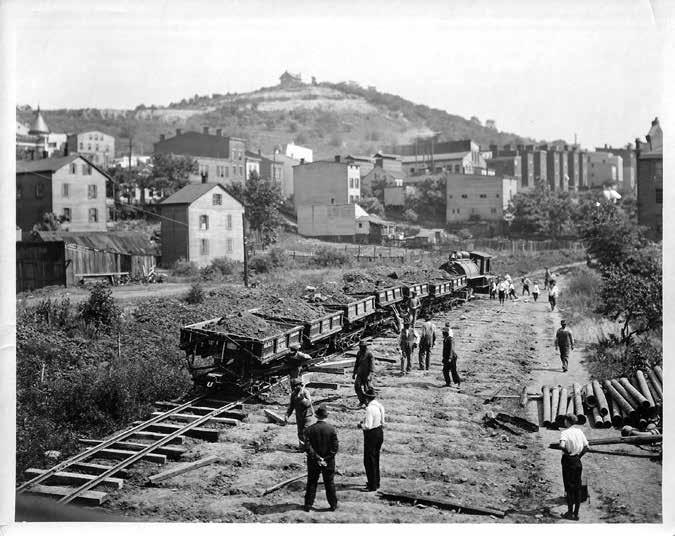
To be clear, there are no plans to move forward with any of these.
“The future of the subway has not been determined,” a spokesperson from the City Manager’s office told CityBeat over email. “The Request for Information (RFI) was just that, an opportunity to seek input and ideas from the public.”
Meanwhile, Cincinnatians took to Reddit weighing in on what they felt would be the best use for the tunnels. The top answer at 689 upvotes? “A subway.”
Can it happen? Will it happen? And subway pipedreams aside, what other public transit goals is our city aiming for? Following the latest wave of public discourse about our legendary abandoned subway, we’re taking a deep dive into Cincinnati public transit.
In the early 1900s, Cincinnati was one
of the largest cities in the country. It bustled with industry. People traveled to and from the city on one of nine interurbans, or railways that ran from Cincinnati to towns like Dayton and Aurora, Indiana. Travelers could make their way from the interurban stations to the city’s downtown by streetcar, but traffic was often congested. A subway, it was decided, was the right solution.
In 1916, the city allocated $6 million (close to $174 million in today’s money) to build a 16-mile loop around the city, according to the City of Cincinnati website. A portion of the loop would be a true subway built underground using the old Miami and Erie Canal. But before they could begin building, the U.S. entered WWI on April 6, 1917. It wasn’t until January 1920 that construction finally began, and by then wartime economic conditions had doubled the cost. Still, they pushed forward, accomplishing
what they could — half the loop and a handful of stations — until the money ran out in 1928. When the Great Depression hit in 1929, it ended all hope of financing and completing the subway project.
It’s hard not to wonder how Cincinnati might be different had the project turned out as planned.
“The subway, had it been finished, could very much have replaced a lot of the downtown traffic congestion,” Berman says.
Of course, less traffic means better air quality. According to the EPA, transportation (including cars, trucks, planes and trains) is the largest contributor to greenhouse gas (GHG) emissions in the U.S., accounting for 28% in 2022. GHG emissions, such as carbon dioxide and methane, trap heat in the earth’s environment and contribute to climate change. Air pollution from cars also has harmful effects on human health, potentially causing respiratory issues, cardiovascular disease and other concerns. These risks are even higher for people who live near highways or heavy traffic areas, and traffic congestion worsens health risks even more, according to a 2013 study published by Science of the Total Environment
While public transit can contribute to GHG emissions, too, use of public transit meaningfully reduces the amount of carbon dioxide released into the air. A 2010 report published by the U.S. Department of Transportation shows that, on average, transit emits less than half the amount of carbon dioxide per passenger mile compared to a single occupancy vehicle, which creates .96 pounds per mile. In comparison, light rail emits .36 pounds, subways emit .33 and bus transit emits .64.
But cleaner air isn’t the only potential benefit of a rail transit system. As Berman studied transit systems across
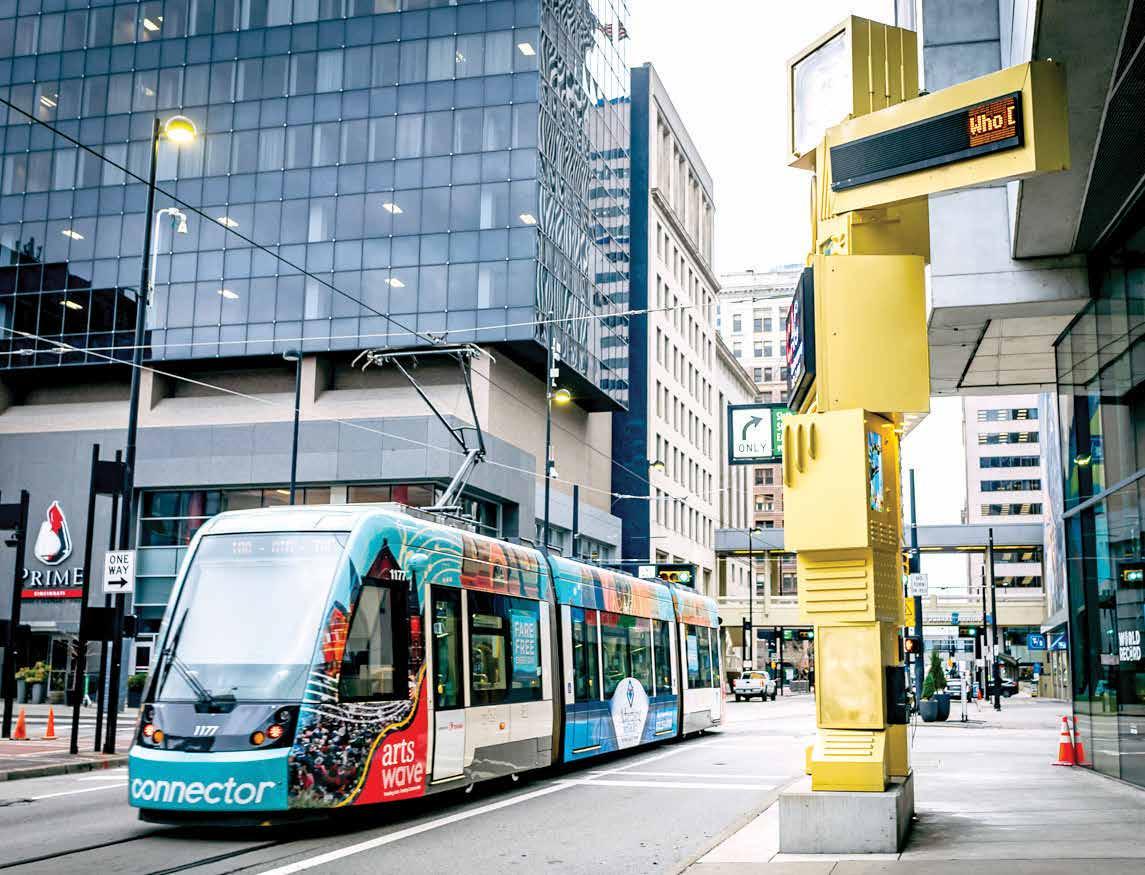
America for his book, he saw how effective public transit could make or break a city’s downtown. Chicago’s rapid transit system, the “L,” connects the suburbs to the downtown, offering useful routes with stops that are actually convenient. In contrast, Cleveland’s three lines of light rail and one line of subway don’t take people where they need to go. They have just one station in the downtown area, and it’s not centrally located, so it doesn’t make practical sense for most commutes. Berman says this is likely why Cleveland’s rail transit couldn’t safeguard its downtown against suburbanization.
“For transit to work and to work well, you really need to have it be fast, frequent, reliable and go the places that you want to go,” Berman says.
Because they don’t fight traffic in the way that buses must, rail transit can be all of these things. Advocates also point out that rail travel can be
a gateway to public transit, since it’s more tangible than a bus route. On a light rail or a streetcar, you can see the tracks or wires and know exactly where you’re heading.
“There’s people that just feel a lot more comfortable with rail,” says Matt Butler, President of the Devou Good Foundation and local public transit advocate. “It’s a fixed route, it’s not complicated to use.”
Wright says this tangibility is one of the benefits of rail transit, along with less urban sprawl, cleaner air and easier commuting. “The cons?” he asks. “I don’t know. I can’t think of any.”
Over the last century, transit advocates have made attempts to put the tunnels to use. Most recently, the subway tunnels were on the Hamilton County ballot in 2002. Issue 7 — titled MetroMoves — proposed expanding Cincinnati’s public transit by building
a network of streetcars, commuter trains and five light rail lines (rail transportation is generally slower than subways but faster than street cars).
“Part of that MetroMoves plan included using the subway tunnels for a line that would serve the West Side of downtown along I-74,” says John Schneider, who chaired the MetroMoves campaign.
Obviously, the plan didn’t pass, which is a hard-to-swallow truth for anyone who’s enjoyed the convenience of light rail in cities like Portland, Oregon or San Francisco. Without them, transit is stuck at the mercy of traffic and potholes — a fate even the most well-thought-out bus systems can’t escape entirely. At just a half-cent sales tax increase, MetroMoves in hindsight seems like a worthy investment.
But things were different then.
“The day of the election in 2002, gas was $1.51 a gallon,” Schneider says.
More than that, the political climate was one of distrust and uncertainty. The nation was ready to go to war, and it had barely been over a year since the riots of 2001 in Cincinnati. Schneider says these circumstances — as well as significant budget overruns on Paul Brown stadium — made taxpayers closed off to the idea of another big project.
“At the time there was a lot of ill, and I think probably a lot of the electorate in Hamilton County has gotten over that,” Schneider says.
According to Schneider, MetroMoves aimed to get public transit within a mile of 95% of Hamilton County’s population. This idealist plan was too ambitious, Schneider says, and too rushed. MetroMoves lost 2:1.
“We were sort of losing going in,” he says without a hint of defeat in his voice. In fact, Schneider remains tremendously optimistic that light rail is in Cincinnati’s future. Not only has the
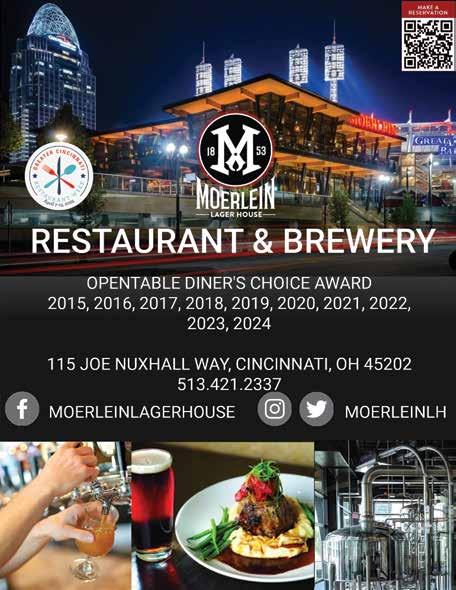

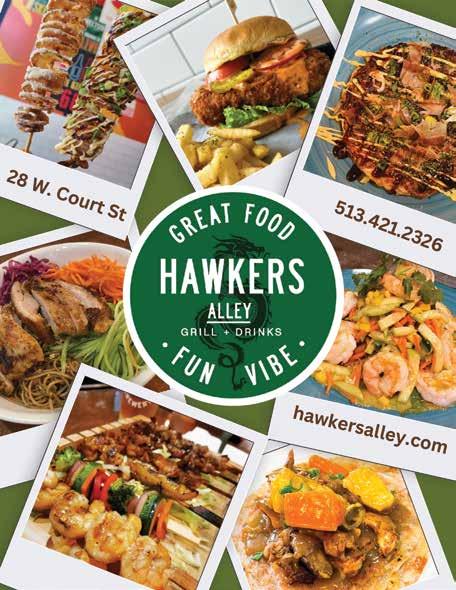

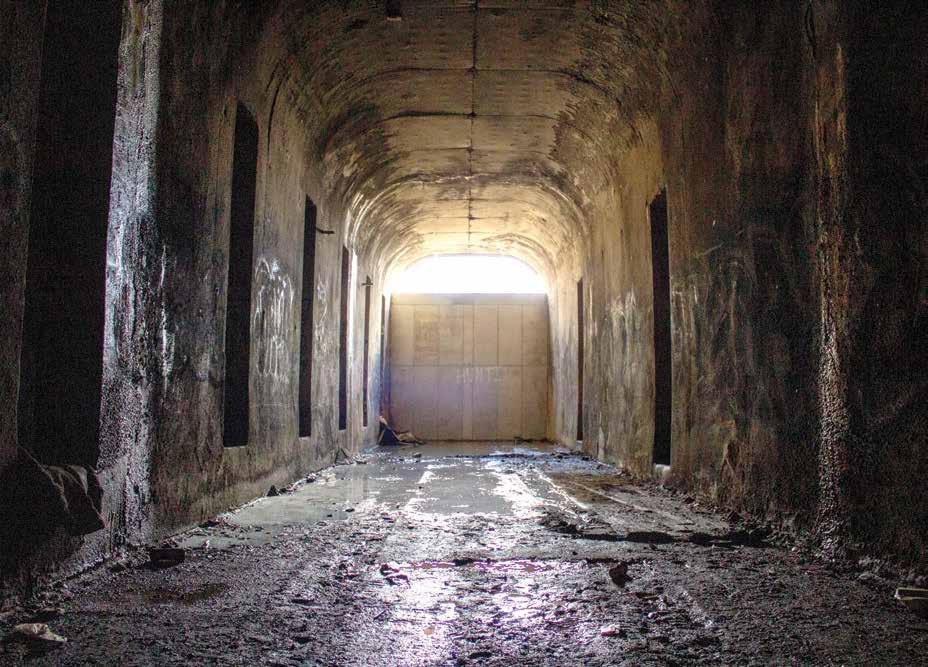
Hamilton County electorate changed since 2002, but voters who opposed MetroMoves may have come around to rail transit after seeing the streetcar in action. Traffic congestion is going nowhere. With a more reasonable plan for light rail, it could be much easier to sway voters towards a transit plan like MetroMoves. Plus, Schneider says, losing once or twice is normal.
“Across the country, the first elections for a light rail system almost always lose,” he says.
For instance, Seattle voted against rapid transit three times — once in 1968, once in 1970 and again in 1995 — before voters agreed to a sales tax increase to support a light rail system, according to a 1996 article in the Seattle Times. Now Seattle’s Link light rail system has the fourth-highest ridership in the country.
MetroMoves may have lost, but those ambitious ideas planted the seeds for public transit wins down the line. The
portion of MetroMoves that sought to expand and improve Metro bus services resurfaced on the 2020 ballot in issue 7. The proposed tax levy would increase sales tax by 0.8% to provide additional funding for the Southwest Ohio Regional Transit Authority (SORTA). A quarter of the money would be for improved roads and bridges, and the rest would fund improvements to the region’s bus services — just like MetroMoves had intended. The SORTA levy passed, making it the first time in history that the Hamilton County electorate voted for a transit-related, county-wide tax levy.
Since then, Metro has added seven 24/7 routes, built a new transit center and updated existing bus stops, and introduced seven new crosstown routes, among other improvements.
“Metro is one of the only transit systems in the country that has surpassed its pre-pandemic ridership levels,” says Cincinnati City Councilmember Evan Nolan.
The Metro website confirms that
ridership is up by 117% from where it was before the start of the COVID-19 pandemic, while most transit agencies in the country are hovering around 70-80% ridership.
Those numbers may continue to increase as Metro introduces its new Bus Rapid Transit (BRT) service, MetroRapid. BRT offers some of the benefits of rail services — speed, reliability, efficiency — through high-quality bus transit. According to Sharyn LaCombe, Senior Director of Bus Rapid Transit Planning & Design, MetroRapid will use “several key technology and service improvements” to achieve this.
“BRT stations will be placed further apart than existing bus stops, so there will be fewer stops between destinations,” she says. “And passengers will pay for fares before boarding the BRT to speed up the time it takes to stop and board passengers, reducing delays.”
Stations will also have level boarding platforms to expedite the boarding process. In order to reduce
traffic-related delays, MetroRapid buses will have traffic signal priority and their own designated bus lanes where road width allows, LaCombe says.
Metro selected two corridors for MetroRapid, using Metro’s four most popular routes as a guide, then following up with research and public engagement to determine which corridors had the most potential to support BRT services.
“As a result, Reading Road and Hamilton Avenue were selected for initial BRT service,” LaCombe says. Construction on both corridors will begin in 2026. LaCombe says the Reading Road corridor will run 9.2 miles from the Riverfront to Roselawn and open in late 2027 or early 2028. The Hamilton Avenue corridor will be an 11.8-mile route that runs from the Riverfront to Mt. Healthy, and will open in late 2028.
“By integrating with existing Metro routes and services, MetroRapid will continue to promote economic growth by increasing access to jobs,

healthcare, education and essential services,” LaCombe says.
MetroMoves also built momentum for the streetcar, which was its own uphill battle. As part of his advocacy work, Schneider led regular trips to Portland, Oregon to educate people on the logistics and value of a successful streetcar system. In the span of 15 years, he took roughly 35 trips with over 500 people. These trips helped him develop a community of rail supporters, who “defended the streetcar when it came under attack from opponents and by former Mayor Cranley,” Schneider says.
Despite recurring anti-rail initiatives, the streetcar prevailed. The Connector opened in 2016 as a 3.6-mile loop that runs between The Banks and Over-the-Rhine, providing easy access to places like Findlay Market, Washington Park and the downtown library. Since its opening, it has worked out many of its kinks, Butler says, leading to faster service and more convenience for riders. Since 2020, the streetcar has been fare-free. In 2024 it carried 1,198,859 passengers, the fourth consecutive record-breaking year, according to a statement from the Office of the City Manager.
“The Cincinnati streetcar is one of the more successful in the country, even though it’s a relatively short loop,” Butler says, referencing an online survey by the Devou Good Foundation. “We know that people are using it for shopping. We know that they’re using it to get to work. They’re using it to get groceries, to get to the doctor.”
Now that the streetcar is up and running — and proving to be a success — Schneider’s activism work has slowed down a little. Although he and his fellow advocates are still hoping to see the streetcar expanded.
“I think that the streetcar ridership would be increased if it went further, which is always a possibility to expand it,” Butler says.
Schneider is hopeful.
“City Hall has shown very little interest in expanding the streetcar,” he says. “But soon, later, some leader will emerge there to say that he or she will get this done. It’ll happen.”
There are good things happening in Cincinnati public transit, largely thanks to determined advocates like Schneider and Butler who keep pushing for more growth. So what’s next?
In his work with the Devou Good Foundation, Butler says combining Metro with the Transit Authority of Northern Kentucky (TANK) is at the top of the list.
“Other cities have transit that crosses state lines,” Butler says. “It’s all

one urban core. To have a system that is not compatible is holding us back.”
According to the Devou Good website, 21% of homes in Cincinnati do not have access to a car. Depending on public transit, to get to and from work can mean changing buses, and walking long distances to and from bus stops. For some, a commute via public transit can take more than two hours one way. Butler says building more bus routes could help reduce this travel time, and in turn give people back hours of time each week.
“Through suburbanization, a lot of people live far away from jobs,” he says. “It’s a big challenge. Elected leaders know it’s a challenge.”
Also on the list is increasing the number of protected bike lanes throughout the city, and expanding the streetcar.
What’s not on the current to-do list? Building rail transit in the abandoned subway tunnels. But that’s not because Butler and others don’t believe it has value.
“A subway, if it went to the right places, I think would be hugely popular,” Butler says. “I think that it would be a massive investment, but I believe that based on what we’ve seen in other cities, people would definitely use it.”
If you’re wondering just how massive the investment would be, look no further than a 2007 study in which city engineers estimated converting the 2.2 miles of existing tunnels for light rail would cost $100.5 million — and that was 18 years ago. It would cost another $14 million in 2007 money to relocate the massive water main that has run through the tunnels since the 1950s.
Despite the high costs, Schneider believes rail transit is worth the investment, pointing to cities like New York and New Orleans that are still operating systems built over 100 years ago.
“Those lines have continued to serve many generations of the people in those cities and have promoted investment around them,” Schneider says.
Like Schneider, Butler looks to Portland, Oregon as an example of a comparable city with excellent public transit, and points to Minneapolis and Seattle as cities that have implemented light rail in the last 20 or so years and are seeing the benefits.
“They have changed modal share about 10% over the last five or six years, meaning about 10% of the people have given up their automobiles because the transit systems are good enough that they can get to where
they need to go,” Butler says.
According to a AAA study report from last year, it costs an average of $12,297 a year to own and operate a new vehicle. Spending $2,000 or so on an annual transit pass in lieu of owning a car could mean saving thousands of dollars a year.
“You could elevate your quality of life,” Butler says.
It wouldn’t be impossible to use the subway tunnels for light rail. Schneider says the idea that modern trains couldn’t fit in the tunnels is just a myth. And some city leaders are not directly against the idea.
“Light rail is a goal for many cities and I wouldn’t be opposed to using the tunnels for light rail if it’s the highest and best use and makes financial and logistical sense for the city,” Councilmember Seth Walsh told CityBeat over email.
Hamilton County seems more on board with investing in public transit than ever before. Whether or not that means we see the subway tunnels become part of it is impossible to say. And while at first glance these empty tunnels seem to tell a story of defeat, the persistent advocacy that unfolded in the century that followed their creation shows this city values public transit enough to put up a fight.



BY NOAH MOORE
Blerd (noun): a portmanteau of “Black” and “nerd” used to describe the experience of being a Black person with nerdy interests, often used to acknowledge the intersection of Black identity and nerd culture.
Growing up in Avondale, Derek Snow was always torn between two worlds — one of anime marathons and SpiderMan comics, and one where being a self-proclaimed Black nerd (or, blerd) meant constantly proving he belonged. As fate would have it, this year finds Snow straddling both in a worldpremiere play, Blerds, opening at the Know Theatre of Cincinnati. If you see a motley crew of Spider-Man, Frodo and other cosplayers roaming around, you can bet they’re part of this show.
After being set to premiere last season, Blerds by J. Corey Buckner finally takes the stage in a story that embraces the fandom frenzy of the early 2000s in a hilarious and heartfelt tale. Following three Black nerds, or blerds, on a journey to Comic-Con in 2002, the story blends coming-of-age themes with pop culture nostalgia, highlighting the challenges of embracing one’s identity in a world where they feel unseen.
“This is just a particular story about a group of three teens who happen to be Black, who are nerdy, and who go on an adventure to sort of redeem themselves,” said Snow. “The playwright and I spoke a lot about creating space. The fact that we’re not just saying nerds, we’re saying Black nerds, is because people of color have always had to carve their own sort of spaces out of the mainstay,” he said.
Among their goals is to meet actor Samuel L. Jackson, known for his turn as Mace Windu in Star Wars. The plot revolving around Jackson is no coincidence, beyond his iconic turn in Star Wars, according to Snow. As both Snow and Buckner grew up during this era, their perspective on the lack of Black heroes in mainstream comics during this time has informed much of the play’s themes.
“(Buckner) said he really wanted to just make a statement about his
personal experience with sort of feeling left out, not only being a nerd, but sort of being left out of any sort of mainstream representation,” said Snow, remarking on conversations with playwright Buckner. “(He) just wanted to see something in there with, like, a skateboard and a Black character holding a skateboard as a sword. He said, ‘it’s just really cool imagery for me.’”
Jackson is only the tip of the pop culture iceberg for audiences in Blerds, from the spirit of Goonies to a more ominous threat in the 2002 D.C. sniper attacks. Among lightsabers and cosplayers, the trio also navigate the sniper attack threats in real time, undeterred in their quest to meet Jackson. Despite its bleaker nature, such real events were tantamount to the show’s sense of place and determination, Snow says.
“It’s a really cool element of realism. They have an adventure in mind, but there’s also this shadowy danger that, like, sort of stays behind them. And it’s always one step behind them,” he says.
The cast is comprised of six performers of color, playing roles ranging from the main trio to Samuel L. Jackson himself. In casting younger performers for the main trio, Snow noted some humorous conversations on the time period, with a specific preclusion to the music of the era.
“It’s weird because the three original students are not aware of a lot because they were so young. All of us on staff and the production staff are like, ‘Oh, man. Remember that 50 Cent, when that dropped?’ And we’re just clicking tracks, and they’re like, we don’t know this song,” Snow said, chuckling. “‘Oh, I kinda heard it in the club before.’ ‘Oh, yeah. I kinda heard Nelly before.’ These things that feel like ancient history to them, but it’s great for us to take a look back.”
The show’s cast is also leaning into the cosplayer and Comic-Con elements of the show, recently taking to the streets with two professional cosplayers as a Jedi and Spider-Man. The result has been an outpouring of excitement around the show from the cosplayer
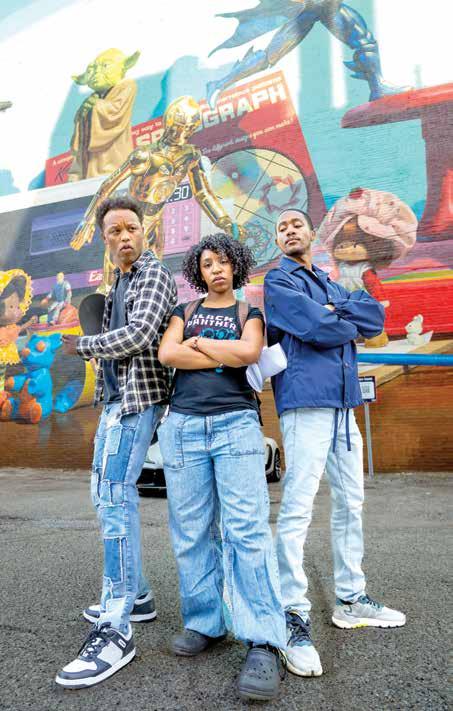
community, including one happenstance moment during a photo shoot.
“There are a lot of cosplayers and nerds in the city who are like, finally! We were taking a picture outside of a brownstone, and a woman was coming home with her keys, and she said, ‘What’s going on here?’ She was so excited, and we couldn’t figure out why,” he said. “She says that she’s actually a professional cosplayer, and she went upstairs and came back with all these costumes and told us, ‘I’m coming to the Know, and I’m bringing all my cosplay friends.’”
The unique story represents identities seldom explored on stage and directly aligns with the theatrical playground identity of the Know Theatre. Beyond the story itself, the Know is also conducting several educational matinees for local schools, including Snow’s own alma mater — The School for Creative and Performing Arts in the heart of Cincinnati’s downtown. The aim, Snow notes, is for young students of color to see themselves represented in a mainstage production. The investment
in this story has been immense, Snow notes, as has the ability to take risks.
“I’ve been working with Know for over twenty years as an actor and directed there only a few times, but they’ve always been just the bravest theater company in town. They’ve been willing to take risks with their show choices and also try to be really inclusive. They make it a sort of a mission statement of theirs — inclusivity across the board,” he said. “I think it’s the best place because this kind of story probably would take a really long time to get to other stages.”
For Snow, embracing his inner blerd is something that comes naturally.
“Black Panther. That was the first time I was exposed to a character who was Black that was not some stereotype,” he said with a smile, embodying the essence of what Blerds is all about. Finally, Samuel L. Jackson isn’t the only one.
Blerds runs from April 4-19 at the Know Theatre mainstage in Over-theRhine. More info: knowtheatre.com.



BY ANNE ARENSTEIN
hy does a symphony musician need a job description?
To an outsider, tremendous talent, performance skills and experience are all that are required.
It turns out that even those skill sets aren’t listed on most major American symphony orchestras’ job listings. Nor are there clearly defined expectations, criteria or standards for achieving tenure after a probationary period.
There’s an unfortunate, long history of musicians being denied tenure with none of the above procedures in place. And a disproportionate number of those musicians are Black.
The Cincinnati Symphony Orchestra is the first major American orchestra whose recently implemented collective bargaining agreement (CBA) includes detailed language regarding job descriptions and procedures for tenure in its recently implemented collective bargaining agreement (CBA), adapted from documents created by the American Federation of Musicians (AFM) Symphonic Services division with input from the Black Orchestral Network (BON).
BON serves as an advocate for Black musicians, providing a network of human and data-driven resources, including the AFM’s model policies and standards document, annual meetings and networking opportunities.
BON grew out of informal conversations among Black orchestra musicians during the pandemic. Virtually everyone shared experiences of embedded racism playing out in the tenure and promotion procedures and the failure of American orchestras to acknowledge the lack of accountability and the absence of equitable standards and procedures for promotion.
BON founders point out that these serious gaps obstruct initiatives to boost inclusivity and equality.
BON formally incorporated in 2021, and in May 2022, it issued its first Dear American Orchestras letter, affirming a commitment to classical music performance and calling on American orchestras to confront a collective history of bias, exclusion and indignities, as well as current barriers Black musicians face.
The letter, signed by Black orchestral musicians, active and retired, sent shock waves throughout American symphonic communities.
“So many Black musicians signed that first letter that it was hard for people in the industry to say, ‘Wait a second. I see that person every day;
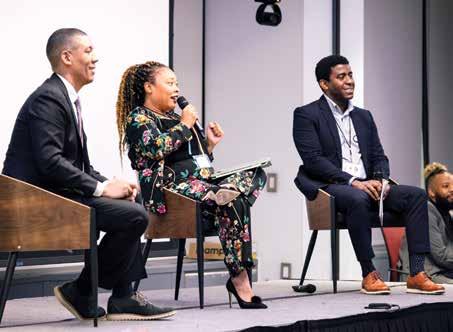
I had no idea they felt like that,’” said BON co-founder Jennifer Arnold, a violist and director of artistic planning for the Richmond Symphony Orchestra.
“It was needed, and the reactions were overwhelmingly positive,” she continues. “These conversations haven’t happened in a public setting, and, at that time especially, a lot of people we contacted about signing said, ‘I need to get this off my chest.’”
But there was little movement to change policies and procedures, and two years later, BON issued a second letter spotlighting the failures of the tenure system: “a process that can harm many and serve few.”
“It can take a long time for the orchestra industry to move into the contemporary era,” acknowledges Rochelle Skolnick, director of symphonic services and special counsel at the American Federation of Musicians of the United States and Canada, who authored BON’s model standards document.
“People affected by the lack of structure and transparency finally felt they have enough of a voice to speak about their experiences and hearing them forced us to see that things are not working well.”
The CSO was already ahead of the game in 2019. Recently retired CEO and president Jonathan Martin explained, “The goal of the ten-point plan was to quickly establish infrastructure to accelerate the absorption of best DEI practices into all facets of the organization. It was a logical extension of our 2019 strategic plan which included a commitment to increasing the number of
McGrath says several new CSO members are working under the new regulations.
Three other orchestras have incorporated BON’s recommendations into their recent CBAs: the New York Philharmonic, the Detroit Symphony Orchestra and the Charlotte Orchestra.
BON founders and staff have high praise for the CSO.
“Jonathan Martin is incredible,” said violist Emilio Carlo, BON’s director of projects and a CCM alum who was in the first class of CSO/CCM Diversity Fellows sponsored by the Andrew W. Mellon Foundation. “Their amazing CBA credits BON for the language used in some of the new inclusions. Hopefully, other orchestras will start paying attention.”
board members of color, hiring a chief diversity officer and having more CSO performances in area neighborhoods.”
In the wake of George Floyd’s murder, the CSO accelerated its efforts with a 10-point program to be accomplished within a year. Harold D. Brown was appointed chief diversity officer in 2021, and as of 2025, 33% of the CSO’s board are persons of color and under the age of 40.
But CSO president and CEO Robert McGrath, who took over from Martin in February, acknowledges that, like other American orchestras, the CSO’s job postings lack job descriptions or criteria for evaluation and transparency during the tenure process.
“We adapted the recommendations BON put forward because they are the most substantial things we’ve done internally to inspire positive change in the CSO’s culture and within the industry at large.”
“From day one, everyone who joins the orchestra receives a document laying out the process by which they’ll be evaluated, the expectations both quantitatively and quantitatively that are expected, from performance level to developing communication and interpersonal skills and community involvement with our neighborhood concerts,” McGrath continued.
“Those expectations are used as a rubric developed to make the process as consistent as possible,” he said. “These were developed in meetings with CSO musicians and staff, ensuring that we use fair and equitable standards and criteria grounded in the position description to evaluate each musician.”
BON co-founder Titus Underwood, principal oboist for the Nashville Symphony and CCM faculty member, adds that CSO is exemplifying what is common practice in most workplace settings.
“By itself, this CBA doesn’t eliminate racism. But its expectations and accountability are clearly spelled out. This is leveling the playing field for everyone,” he said.
“It’s incredibly meaningful that the CSO adopted some of BON’s language in its CBA,” said Weston Sprott, BON cofounder, dean and director of Julliard’s preparatory division and trombonist for the Metropolitan Opera Orchestra.
Sprott hopes that other orchestras will want to model their CBAs on those of the CSO and the other three cited in BON’s recent press release.
“These organizations that are setting the pace will be seen as successful organizations because this is more than the right thing to do; it makes the organization better,” he said.
“The letters we wrote are based on our lived experiences,” he continued. “Some experiences are traumatic; some are good and everything in between. We’re not out to be an organization to base ourselves in grievance and trauma. We’re based in creating practical solutions that make the world better for everyone and centering on what would make the world a better and more inclusive for Black musicians.”
For more information about the Cincinnati Symphony Orchestra, visit cincinnatisymphony.org. F or more information about the Black Orchestral Network, visit blackorchestralnetwork.org.

BY LEYLA SHOKOOHE
he Anti-Robot Army is invading the Contemporary Arts Center this April. Helmed by the Robot himself — alias Pablo Wright — the Anti-Robot Army is an ongoing art project contemplating the power of propaganda and programming. The project uses stickers with bite-sized messaging to redirect your attention and snap you out of the haze of robot-like late-stage capitalism. The exhibition, called Program or Be Programmed, is a retrospective of the Anti-Robot’s work.
“A robot supposedly does what it’s told,” said Wright, an artist based in Cincinnati. “So then the anti-robot was the overarching way of fighting propaganda [and] advertising.”
The concept of the robot is derived from what’s known as the illusory truth effect. This phenomenon occurs when any statement, whether true or not, is repeated frequently enough that it feels true. Perception becomes reality. Studies have shown that repetition is the gateway to the belief of validity, even when people know something is not true or valid.
“This sort of came to me during the Bush administration where they just repeated lies and lies and lies, over and over,” said Wright. “The idea being, if you repeat a lie enough times, does it become fact?”
The project began when Wright, a computer programmer by day, created a bot for his social media pages. These bots would wake up at random times, pull a random quote from a database he created full of quotes and sayings, and post them to Instagram, Facebook and other platforms.
“Another aspect of this whole project is the concept of noise versus signal,” said Wright. “[With] data movement or communication, you have a certain amount of extraneous information and noise that may interfere with the actual message you’re trying to convey. It added some amount of entropy or chaos to the social media it was attached to. When you open your feed, you can choose to either look at, ignore it or move on. And so there’s a piece of your attention that has just been swiped for a fraction of a second.”
Wright made the Anti-Robot tangible when he started making linoleum block prints on postcards. He’d put a political screed on the back of the postcard, and send it out at random to a name he’d pick out of the phone book. It was generative work, but sending 70 to 80 postcards at a time meant Wright was only reaching a narrow group of people.
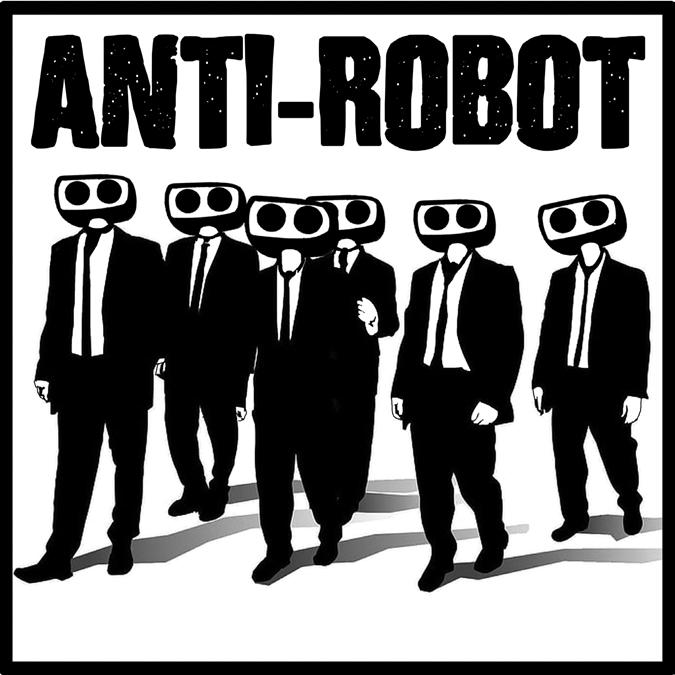
“CAC has a really long history of working with street artists and graffiti artists,” said Turner. “Being one of the first institutions to do that, it’s important for us to continue that tradition.”
“What really took off is when I started making vinyl stickers,” said Wright. “The largest focus of the last six years of the Anti-Robot project is stickers with political messages.”
The stickers often feature the Robot, which has the body of a Reservoir Dog and the head of a classic robot, like Rosey the Robot from the Jetsons. Aphorisms like “corporations are not people” and “I buy therefore I am” accompany the mostly black-and-white images. Some stickers feature “fembot,” a robot-headed woman in a business suit with her hand on her hip. Some messaging is more explicit, like “AntiFascist Anti-Trump,” which features bombs dropping out of an airplane.
The stickers can be found all over
Cincinnati and Northern Kentucky, when they’re not torn down by city cleaning entities, or, what you could call the anti-anti-robot army, and beyond. In sticker parlance, to “slap” is to put a sticker up. Wright’s stickers have been slapped around the world, including cities as far away as Tokyo and London.
“It is a worldwide phenomenon of not only putting stickers everywhere, but trading them,” said Wright. “People started asking me for stickers, so I started sending out stacks and stacks of stickers all over now. People send me the pictures where they put them up in about 180, 190 cities now all over the world.”
When Wright pitched his work to the CAC, the street art factor played a huge part in securing the gig.
“I loved [Wright’s] process and I liked the idea behind creating stickers and creating the posters, and this performance art activity of exchanging stickers and having them move all around the world,” said Shawnee Turner, chief of interpretation and experience at the CAC. “There’s just this amazing conversation happening with people all over the world that we don’t even know anything about and it’s all through this visual language that anyone can understand.”
Among Wright’s inspirations are street artists like Shepard Fairey, whose famous “Obey Giant” work he’s
referenced in his stickers. And Fairey, too, has been featured in exhibitions at the Contemporary Arts Center, including as part of the Beautiful Losers exhibition along with artists like Swoon back in 2003.
“CAC has a really long history of working with street artists and graffiti artists,” said Turner. “Being one of the first institutions to do that, it’s important for us to continue that tradition. A lot of these artists are paving the way for [others] to become social justice artists, because so many of [them] are out there creating unsanctioned art as a way to draw attention to a cause or a situation in society.”
The Anti-Robot Army is an excellent case in point.
“That’s what I see when I look at Pablo’s work,” said Turner. “It’s just a little poke that says, ‘Are you thinking for yourself?’”
The exhibition is located in the lower-level community gallery. It features about 60 posters showcasing the Anti-Robot’s various sticker campaign images, a slideshow showing Anti-Robot stickers around the world, volumes of stickers from other sticker artists, hundreds of buttons related to the project and a display highlighting how people have interacted with or modified the stickers.
“This is a huge, huge shout-out to the Cincinnati Public Library and their Makerspace [which is where] I make these stickers,” said Wright. “When I first started this project, I was going to an online printer. I used to spend 120 bucks and come out with maybe 100 stickers, [whereas] I spend the day at the library, cutting them out myself and come away with 200 stickers.”
CAC visitors can take home “propaganda packs,” aka compilations of stickers Wright has put together, and proceed to do their own slapping.
“The reason I started reaching out to galleries to do this is because I want to spread my message, the Anti-Robot message,” said Wright. “ So even if out of these 50 or 60 posters [someone] goes home with the one of those five or six-word [messages like], ‘Culture wars are not meant to be won’ or ‘You are beautiful,’ or ‘Love one another,’ any of these messages, if somebody takes one of those home that’s a measure of success.”
Program or Be Programmed opens April 17 and runs until June 1 at the Contemporary Arts Center. More info: contemporaryartscenter.org.

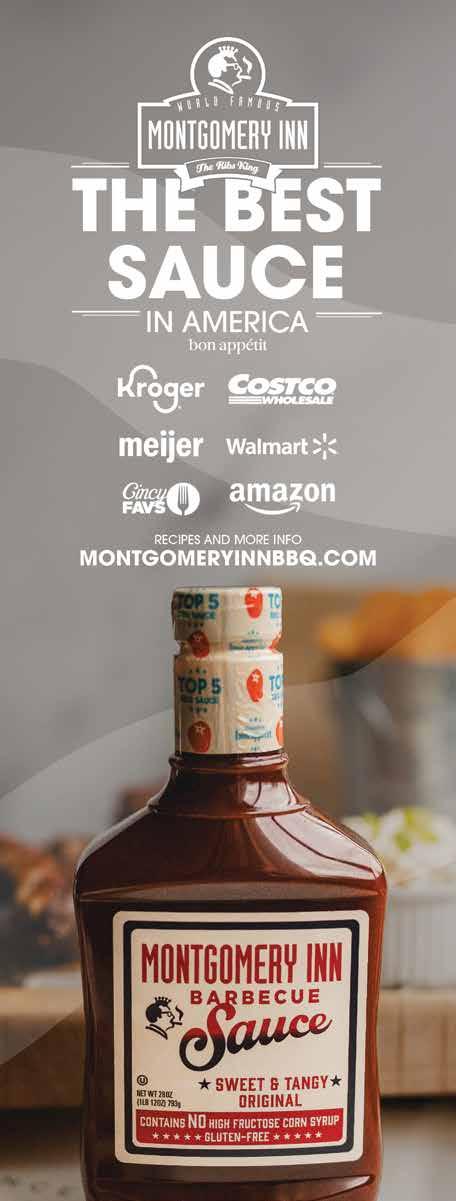


How Greater Cincinnati farms are supplying the food we need in sustainable, eco-friendly ways
BY CAROLINE BECKMAN
Sustainable farming is more than a buzzword; for several local farmers, it’s a way of life and the key to the future. Sustainable farming focuses on long-term ecological health and providing healthy food. Quite simply, it focuses both on the present and the future. Several farms throughout the Greater Cincinnati area are bringing these values to local restaurants, markets and consumers, and are working to sustain the environment for years to come.
Sustainable farming is not without its challenges, and it’s only getting harder. Climate change and extreme weather can impact product yields and throw new curveballs for farmers. In trying to avoid herbicides and pesticides, farmers have to find creative methods to repel pests and harmful weeds. And, of course, for poultry farmers, trying to avoid and work around the bird flu is a major obstacle. Treating livestock humanely is also of the utmost importance, which means no corners can be cut. Cincinnati-area sustainable farmers employ a number of creative, eco-friendly ways to produce delicious and healthy produce and take care of the earth.
Brushy Fork Family Farm in Bethel, one of the suppliers for Findlay Market staple ETC Produce & Provisions, specializes in sustainably-farmed chickens and eggs.
“All of our chickens are in open-air barns and have pasture access. They’re not confined at all,” said Terence Schlueter, who owns Brushy Fork. “They actually get to be real chickens and run all over the place. We feed a non-GMO (genetically modified organism) corn and soybean ration.”
Sustainably farming poultry in the age of the bird flu is both crucial and more difficult, according to Schlueter. The

problems lie in the parent stock of birds. Egg production is a multi-tiered endeavor.
“There’s parent stock that produces the offspring,” Schlueter explained. “The offspring produce the table eggs. The parent stock are the ones that have been affected by the bird flu, and the parent stocks take approximately 26 weeks to replace. The offspring of those take an additional 18-20 weeks before they start laying in full production. So when the parent stock is affected by the bird flu, it creates almost a year-long problem. And then there’s not enough parent stock, either commercially or locally, to sustain the bird.”
Brushy Fork Family Farm did acquire some parent stock recently, and they are in the process of producing replacement hens. In an age of uncertainty and shortages, purchasing local and being independent of commercial companies is more important than ever to Brushy Fork Family Farms.
Located in Hamilton, Weathertree Farm & Market has been bringing fresh, local produce to the masses through their farm store and farm box program, a 27-week subscription program that allows participants to receive a weekly variety of produce grown at Weathertree Farm. The owners, Wes and Mindy Flach, have a background in Christian ministry and working with people in recovery from addiction. Their faith informs their sustainable farming and their call to care for the earth.
“I believe in leaving the land as good as we find it or even better,” Wes Flach said. “Humans don’t have to be a blight on nature. We are a part of nature and if we learn to play our part, we can work together with nature to produce even more abundance. It’s not simple, nor easy, but it is the right way to do things and the only way that can actually sustain us into the future.”
Flach has been farming for five years and selling produce for almost three years. Weathertree Farm & Market produces organic produce, pasture-raised eggs, forest-raised pork, seedlings and
cut flowers. The Flachs make sure to treat their livestock in a humane manner from the beginning of their lives to the end, rotating them around to fresh ground to make sure they are able to “root and peck like they were created to do” and then butcher them in a humane way.
To sustainably grow produce, first and foremost, the Flachs focus on soil health, avoiding herbicides, harmful chemicals and synthetic fertilizers, and only using a select few organic pesticides.
“We employ these using an approach called Integrated Pest Management, which focuses on using a variety of methods to limit pest damage to crops,” Wes Flach said. “On our farm, our first line of defense is soil health and ecosystem balance. Next, we exclude pests whenever possible by using floating row cover and insect netting. We practice crop rotation to keep pest levels manageable in order to avoid spraying anything. Only if after all of that we are still experiencing significant levels of pest damage will we consider using an organic approved biological pesticide like BT (bacillus thuringiensis).”
The Flachs try to pay employees well and charge a reasonable, fitting price for their goods so that their time and expenses are covered. They also promote and work with other artisans and farmers.
Wes Flach said, “Without our neighbors we cannot be sustainable farmers.”
Our Harvest, with locations in Morrow and College Hill, believes all residents of the Greater Cincinnati area deserve healthy, accessible food grown by fairlycompensated workers. The team behind the farm co-op seeks to honor both land and labor.
Sustainable farming is important to Our Harvest for the health of the planet and of its inhabitants. “Let food be thy medicine and medicine be thy food,” said worker-owners Steve Dienger and Timothy Burns said in a joint emailed statement. “Our culture has become so focused on convenience and consumption, so busy, it’s difficult for people to care about the quality of the food, to
know where their food comes from. But when we know, when we can recreate that relationship, that connection, that trust with who is growing our food, food becomes especially nourishing, powerful, and life-sustaining.”
Open since 2012, Our Harvest produces over 35 different types of vegetables and 90 varieties of produce. Products offered include tomatoes, lettuce, cucumbers, winter squash, collard greens, turnips, carrots, cauliflower, basil, cilantro and many more.
Our Harvest practices sustainable farming methods such as crop rotation, composting, rotating chickens to build up the organic matter in the soil, avoiding synthetic fertilizer and holistic pesticide methods with minimal spraying, even then they only use organic sprays. Instead, Our Harvest uses a holistic approach to pest management by attracting predators of pests, leaving things like wasps’ nests alone as long as they don’t pose a danger to employees, and isolating and eliminating plants with a pest problem so the problem can’t spread. Sustainable farming is not easy. Climate change and extreme weather events pose a threat. Our Harvest uses minimal fossil fuels, which causes more reliance on human power. This is a laborintensive and costly process.
Established in 1855, Carriage House Farm, located in North Bend, has been owned by the same family for five generations. Carriage House Farm focuses on the production of regional varieties and seasonal crops, grains and fresh honey. Before the pandemic, Carriage House Farm supplied produce to about 75 local restaurants. After COVID-19 hit and rocked the food and beverage industry, Carriage House Farm turned primarily to a retail-based business model. Carriage House Farms hosts on-site dinners, a food truck called Chloe’s Eatery that uses ingredients from the farm and an on-farm market. Located on the grounds of Carriage House Farm is The Lost Bridge Beverage Company, an alcoholic beverage company co-owned by Carriage House Farm farm manager Richard Stewart that uses ingredients sourced from the farm in their beverages, which include beer, wine, hard seltzers and craft cocktails.
Although Carriage House Farm is not completely chemical pesticide-free, they try to use as little as possible, focusing on methods such as trap crops and beneficial predatory insects. For Carriage House Farm, sustainable farming is about connecting to the earth and their roots, as well as maintaining soil health, a priority at Carriage House Farm. Carriage House Farm, helmed by Stewart, aims to be a steward of the land, not just a business.
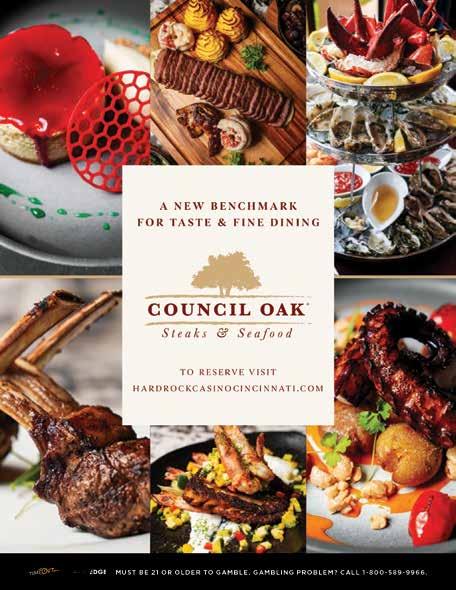

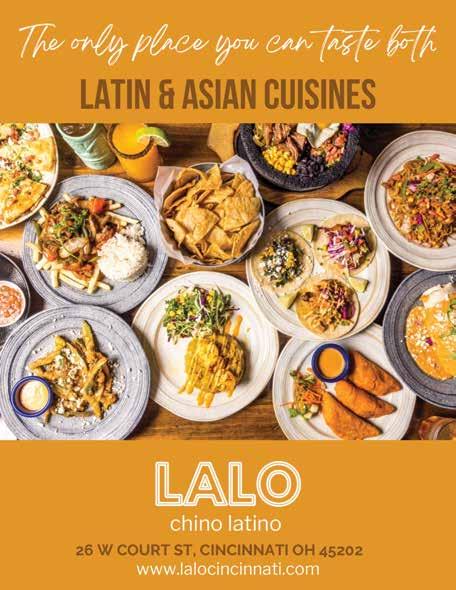

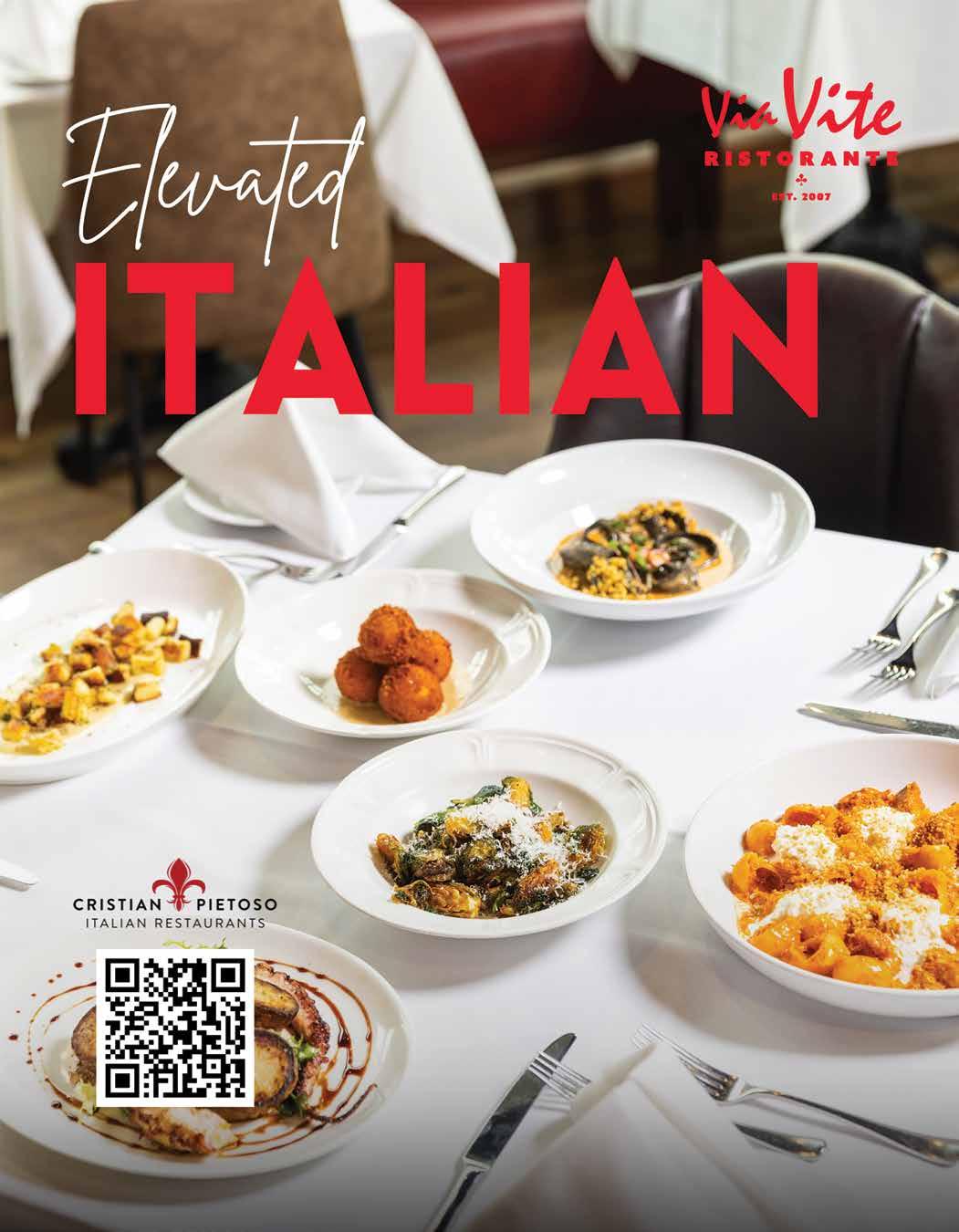
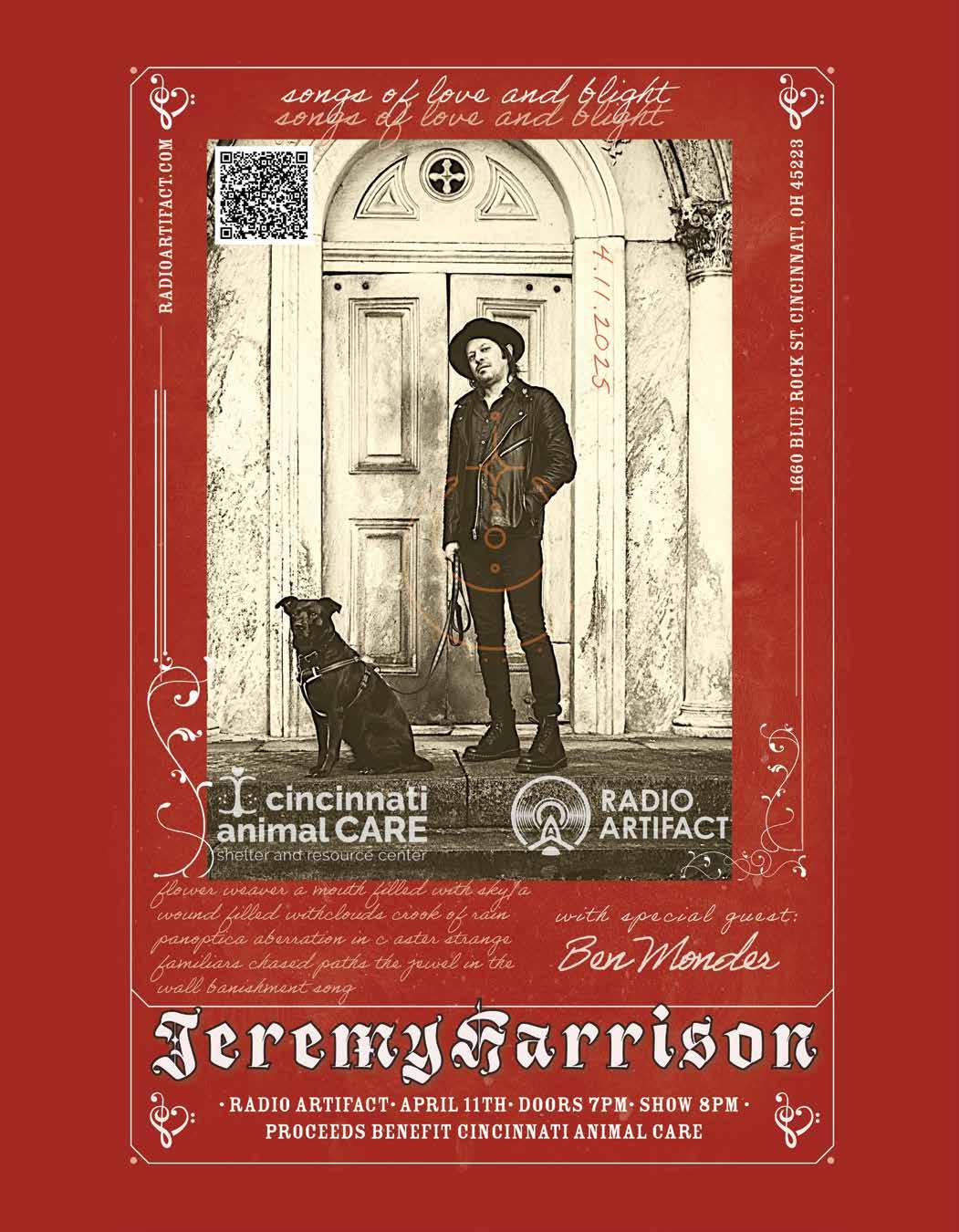
The hyper-vibrant frontman for Banderas and Honeyspiders presents a different vibe on his own.
BY BRIAN BAKER
Jeremy Harrison has self-deprecating, perhaps unfairly harsh observations on his contributions to Cincinnati’s music scene over the past two decades. He summarizes his time with hard rock sleaze masters Banderas and the nuanced but still louder-than-God’swrath Honeyspiders with surprising humility.
“I’m always the shittiest musician in the room, but I’d have some good ideas,” Harrison says over beers at the Northside Yacht Club, the skilled mixologist’s employer. “I occasionally caught lightning in a bottle. I just wasn’t good at juggling.” Harrison’s self-criticism may be undercut by his debut solo album, Songs of Love and Blight. Expectations for tumultuous rock dissolve in sonic waves of atmospheric texture and the tension between mildly claustrophobic intimacy and mind-melting expansiveness. Discarding established blueprints, Harrison’s solo approach is contemplative introspection through a mixture of noisy sound collage, mesmerizing drone and a slightly hallucinatory psych-folk melodicism.
“This album let me utilize what I’m better at,” says Harrison. “I recorded it very lo-fi. I wanted it to feel intimate, like a handwritten letter or a mixtape where someone wrote songs for you. I purposely left in a lot of tape hiss and mistakes, because that feels more intimate and urgent. I end up falling in love with demos more so than the finished product. There’s a little magic in there that gets scooped out when you clean everything up. I didn’t want to lose that. If I did anything right, I did that.”
Part of Songs of Love and Blight’s appeal is its organic evolution. The album was conceived five years ago during COVID’s forced isolation, and while some artists were creatively blocked by the lockdown’s solitude, Harrison embraced it.

“Like everyone’s hare-brained idea, it started because you’re sitting around in your underwear with nothing to fucking do,” says Harrison. “I was living alone. I was thriving. I didn’t have any creative pursuits, I was focused on making cocktails. The first song started as an exercise, like, ‘Why don’t I try to make a song?’ I had no intention of doing a record.”
That lack of intention fueled Harrison’s work ethic, freeing him to experiment with approach and execution. Ultimately, Harrison perceived an actual album taking shape.
“I had so much fun making the first song, ‘Crook of Rain,’” Harrison recalls. “Then I was dicking around and the beginning of another song started. I had two or three songs for a while, and suddenly I’m thinking, ‘What if I made a record?’ That’s when it got really fun, because I established a language for what kind of songs I could do. I wanted a merging of this otherworldly but folkish feeling, like things were coming from this great other, mixed with a guy with an acoustic guitar. Then it came to how they felt as a collection and what’s missing. It went from writing a couple of songs to almost like writing a script.”
As an actual album vision coalesced, Harrison set vision parameters. His first requirement for Songs of Love and Blight was limiting the album’s size without narrowing its scope.
“I wanted it around 30 minutes,” he says. “I didn’t want it to be too short, like Jeremy made an EP. I wanted a full record, but I didn’t want The Lord of the Rings. The most beautiful songs have this air of mystery because they’re short, like ‘Teenage Kicks’ by the Undertones. It’s like seeing someone attractive on the bus and your head fills with ideas of who they could be to you. Next thing you know, they’re gone. And that’s nice, that fleeting bittersweet moment that you keep replaying. I wanted these songs to have that effect on people.”
During the album’s evolution, Harrison felt guided by environmental influences rather than musical inspirations. The first
of those was lockdown’s liberation from the daily grind.
“With the free time, I was occupied, tinkering with things, having the chance to be creative,” he says. “To not be too tired or hungover or feel like, ‘I could start that right now, but by the time I get really into it, I’ve got to go to work.’ It was time to let things be and not to have ambition or intention.”
The other inspiration was his move to Milford to inherit his parents’ home after his father’s passing and his mother’s relocation to a smaller living situation. Harrison’s father is buried in the cemetery across the street.
“I can open the door and see him there. There’s a weird, bittersweet comfort in that,” says Harrison. “Walking around that neighborhood is like a Lifetime movie. There are little breaks of nature that you don’t get in the city. That got the juices flowing.”
Harrison ultimately decided to banner the album with his name rather than shield himself with an anonymous project identity. It was less about self-aggrandizement and more about the artist’s and the art’s vulnerability.
“This is what I’ve always been, I just never had the opportunity to show it,” says Harrison. “These are things I listen to at home, this is what I write when I’m not prompted or working in the confines of other ideas. I didn’t want some ethereal project name because this feels personal. I played, wrote, recorded everything on the record, for good and bad. If there’s one bad song, it’s my bad song. I can’t be like, ‘The drummer really wanted that fucking song.’ There’s no place to hide. That’s scary, but it’s also really rewarding.”
Songs of Love and Blight actually dropped on Bandcamp last September with little fanfare or promotion. The album came to the attention of Polina Bespalko, director of the Xavier Music Series at Xavier University, who enthusiastically contacted Harrison about including him in the series.
“Polina called and said, ‘This music is fantastic. I want to feature you in our
music series,’” says Harrison. “I was like, ‘That’s weird, but I don’t know when this will ever happen again, so okay.’” Harrison now has to validate that “okay.” He’s prepping intensely solo material for presentation in a full band format for an immersive show at Radio Artifact on April 11. That process often leads to uncovering the material’s forgotten or unnoticed elements, but Harrison dismantled and reassembled the songs until nothing remained unknown within them.
“It’s hammered into my head, really,” he says. “It was going over everything with a fine-toothed comb, and it was strictly me. I sucked all the marrow out of it. All the self-reflection has been reflected.”
Harrison is incredibly enthusiastic about the live version of Songs of Love and Blight, particularly because of the stage talent he’s gathered. His older brother, Chris, will provide guitar as he did with Banderas and Honeyspiders; their multiinstrumentalist Banderas bandmate, Todd McHenry, who also mastered Love and Blight, will serve as the bassist; and drums will be provided by Cruel Age beatkeeper Oliver Mungin.
Harrison is perhaps most excited by the inclusion of musical polymath/Jess Lamb collaborator Warren Harrison, no relation but a renowned local figure that Harrison has long wanted to work with himself.
“We joked about having a band called Harrison Squared, but now with Chris, we could call it Harrison Cubed,” he says with a laugh. “Warren is a sweetheart.”
The Radio Artifact show promises to be a multimedia extravaganza. Visual artist Ian Hayes will provide old-school live video manipulations projected behind the band, and Harrison says they’ll be experimenting with set design, perhaps even a scent-based component. He’s excited about the studio-to-stage arrangements for material that was never intended to have an audience.
“It’s all coming back around,” says Harrison. “It was like, ‘Yeah, I can do this all by myself,’ and now it’s, ‘I did all that, now I need my guys really bad.’ We’ve expanded and fleshed the songs out. This record was supposed to sound intimate, but I wanted things to feel bigger live.”
As Harrison plans for Songs of Love and Blight’s live debut and teases a second album, he still wrestles with his nascent solo career’s reality.
“I don’t have a name that screams ‘solo artist,’” Harrison says with a laugh. “But fuck you, it’s me.”
That should be the sophomore album’s title.
Jeremy Harrison’s Radio Artifact show on April 11 will be a presentation of the Xavier Music Series. Admission to the show is free, but there is a suggested donation; all proceeds from the evening will benefit Cincinnati Animal CARE, a no-kill shelter that takes in 7,500 animals a year. More info: xavier.edu.

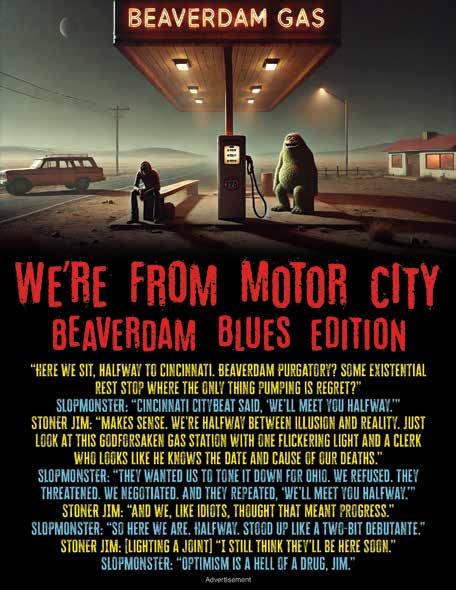

BY ALANNA MARSHALL
Michael Marcagi, homegrown in the Queen City and a “Midwest Kid” at heart, has had a whirlwind of a year. With the release of his solo debut single, “The Other Side,” in December 2023 and then “Scared to Start” in January 2024, the singer-songwriter could not have predicted what would follow.
Before Marcagi’s rise to solo fame, he was a member of The Heavy Hours, a local alt-rock band formed with four other members who Marcagi knew from when he attended Anderson High School. After releasing their “Wildfire” EP in August 2021 and full-length album Gardens in February 2022, Marcagi decided to venture out on his own, marking the beginning of his solo journey.
He especially could not have foreseen going viral on TikTok, breaking into the Billboard Hot 100 charts in February 2024 and performing at places like the Out of the Blue festival this year in Cancún, Mexico, alongside artists like The Lumineers, Rainbow Kitten Surprise and Noah Kahan.
Marcagi’s skyrocket into stardom had much to do with the singer-songwriter’s ability to capture his Midwestern experiences, which have influenced all areas of his life both in and outside of his career. After embarking on his “Flyover State” tour and opening for The Lumineers’ North American and European tour this year, Marcagi is no stranger to the restless life of a musician. While incredibly grateful for the opportunity and ability to bring his music to different areas of the world, this life is not all glitz and glamour. “I have only been home and slept in my own bed a few weeks out of the entire year, so it definitely [has] been really fast-paced,” Marcagi tells CityBeat
Not being able to see his family and friends while out on the road gets exhausting, especially with such a strong connection to his hometown of Cincinnati. “I haven’t seen my friends and family all that much. [I’ve] been out on the road so much [that] it can feel a little bit exhausting when you’re waking up in a new city and you don’t even know where you are,” he says. Being on the road does have its perks, though. With all of the traveling and discovering new places, Marcagi is able to bring his hometown along on the ride through his interactions with Cincinnati outsiders. “I love being out on the road in a random place and getting a ‘Who Dey’ shoutout from off-stage. People love to talk about Skyline Chili,” Marcagi jokes.

His latest single, “Flyover State,” touches on Marcagi’s experiences with imposter syndrome and the feeling of belonging. “It was kind of just the sentiment of [being] this dumb kid from the Midwest trying to make it in the music industry,” Marcagi says. This sentiment is something that fans of the singer-songwriter relate to, as Marcagi’s emphasis on his upbringing and his roots in his songs – especially in his single, “Midwest Kid” – sheds light on topics that are often not touched on by many mainstream artists.
As Marcagi travels to new places, he gets mixed reactions when he tells people where he’s from. “I think Ohio [has] crept into the Gen Z vocabulary as a term for being ‘mid,’ or something like that,” Marcagi laughs. However, this is precisely what makes the singer’s music so special, especially for Midwest natives, who know firsthand what these places have to offer. “[It] touches on being from a place that no one seems
to care about and [is] often overlooked and trying to have the confidence to go out and do what you do in different parts of the country,” he says.
As a musician, one of the biggest moments of your career comes when performing in front of the place that you grew up in. For Marcagi, this moment came at the Cincinnati venue Bogart’s, where he performed in June 2024. “[It] was literally one of the highlights of my entire life,” Marcagi explains. “It was filled, and seeing so many friends, family members and people that I haven’t talked to since high school and even grade school that have come out and supported me [was] really cool.”
This feeling is somewhat of a testament to Cincinnati, according to Marcagi. “We’re very good at being supportive of our own,” he says. This support has played a role in so many Cincinnati-native musicians’ careers, and Marcagi is no stranger to this phenomenon. “Hopefully I’ll do another
Cincinnati show, maybe in the summer or the fall after we get back from Europe with Lumineers. That’d be awesome,” he says.
Even after traveling around the world throughout the past year, Marcagi has never forgotten his hometown and the people in it. The singer’s journey from zero to 100 has only made it more apparent how staying true to his roots and sharing his experiences with people around the world is what makes his blooming career evergreen. With this, his passion for where he comes from only strengthens. “I’m very glad and proud to be from there, and that’s where I go back [to] after all these tours,” he says. “That’s where I live, and I really miss it. I’m excited to get back home to Cincinnati.”
Marcagi’s upcoming EP, Midwest Kid, will be released on April 18. For more information about Michael Marcagi, visit michaelmarcagimusic.com.




April 9 • MegaCorp Pavilion
The five bandmates in flipturn — Dillon Basse, Tristan Duncan, Madeline Jarman, Mitch Fountain and Devon VonBalson — kicked off their tour on March 13 in Salt Lake City and are now heading to Newport.
Based out of Fernandina Beach, Florida, flipturn was formed in 2015 when Basse, Duncan and Jarman were seniors in high school. Fountain and VonBalson joined in the band’s college days, and the group’s early work included the release of their Citrona EP in 2018. The EP is packed with the band’s signature blend of nostalgic sounds and lyrics, catchy riffs and synths, and an overall cinematic listening experience. The fifth track on that EP, “August,” ended up being the band’s most-streamed song with 62 million streams on Spotify. The song’s dreamlike sound and introspective lyrics, reminiscent of the passing of time and the people who fade in and out of one’s life, make for a perfect soundtrack to some of the bittersweet life experiences everyone can relate to.
Their debut album, Shadowglow, was released in August 2022 and features another hit, “Sad Disco,” which lives up to its name through the song’s melancholic lyrics backed by a bouncy melody. This makes for a tune one can both dance and cry to, depending on the day. The album showcases more of the band’s songwriting abilities, exploring the hardships of balancing youth and the inevitable responsibilities of entering adulthood. Fast forward to January 2025, and flipturn’s most
recent album release, Burnout Days, is an extension of the band’s ability to juxtapose upbeat melodies with heavier subject matters through its exploration of accepting change and adapting to the good and bad side effects of tireless hard work.
Playing their lively sets at festivals like Bonnaroo, Governor’s Ball and Lollapalooza, flipturn has brought their sprightly performances across the states and beyond throughout the past ten years. Bringing their songs to life on stage, flipturn’s dynamic performances allow fans to leave their inhibitions behind and fully immerse themselves in the band’s atmospheric music for as long as possible.
flipturn plays MegaCorp Pavilion at 8 p.m. on April 9. More info: promowestlive.com. (Alanna Marshall)
April 10 • Ludlow Garage
Tyler Hilton is making a stop in Cincinnati on his “Celebrating the Music of One Tree Hill Tour” this month. Known widely for his role as Chris Keller on the CW’s One Tree Hill, Hilton has established himself in the realm of television and music over the past twenty years.
The singer was 16 years old when he sang an acapella version of Jonny Lang’s “Breakin’ Me” on a call with the Mark & Brian Show on KLOS in Los Angeles, which led to him securing a performance at the station’s Christmas concert. This led to him signing a record deal at 18 years old with Maverick Records, and eventually releasing his self-titled EP in April 2004.
As a singer, songwriter, actor and author, one of Hilton’s biggest hits – with 14.9 million streams – was a cover of Ryan Adams’ “When the
Stars Go Blue” on One Tree Hill that gained him a lot of popularity both during and after the show’s run. As a musician, Hilton’s husky tone and timeless music that ranges across genres like rock, folk and Americana have captivated fans and audiences around the world at his live performances. In the same year as his acting debut on One Tree Hill, Hilton released his debut album, The Tracks of Tyler Hilton, in September 2004. At just 20 years old, Hilton produced instant classics like the easygoing opening track, “When it Comes,” and the heartfelt “Glad,” which were both featured in the soundtrack for One Tree Hill Now, as Hilton makes his way across 10 different countries this year for his tour, he is able to bring both his classic and newer tracks to life in a new way. His blending of raspy vocals and indie rock sounds combined with the sentimental nostalgia felt by each of his songs make Hilton’s live performances unforgettable.
Tyler Hilton plays Ludlow Garage at 7:30 p.m. on April 10. More info: ludlowgaragecincinnati.com. (AM)


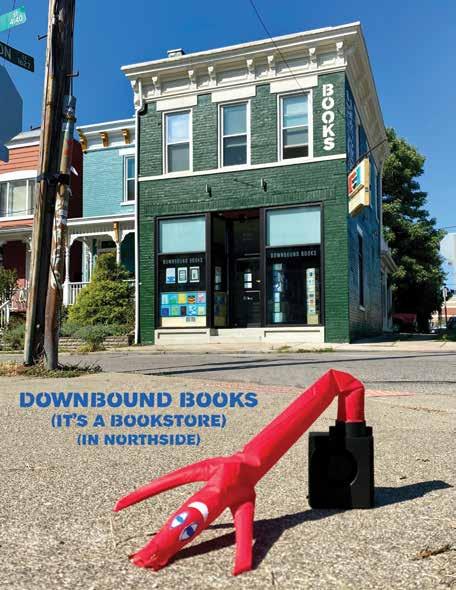


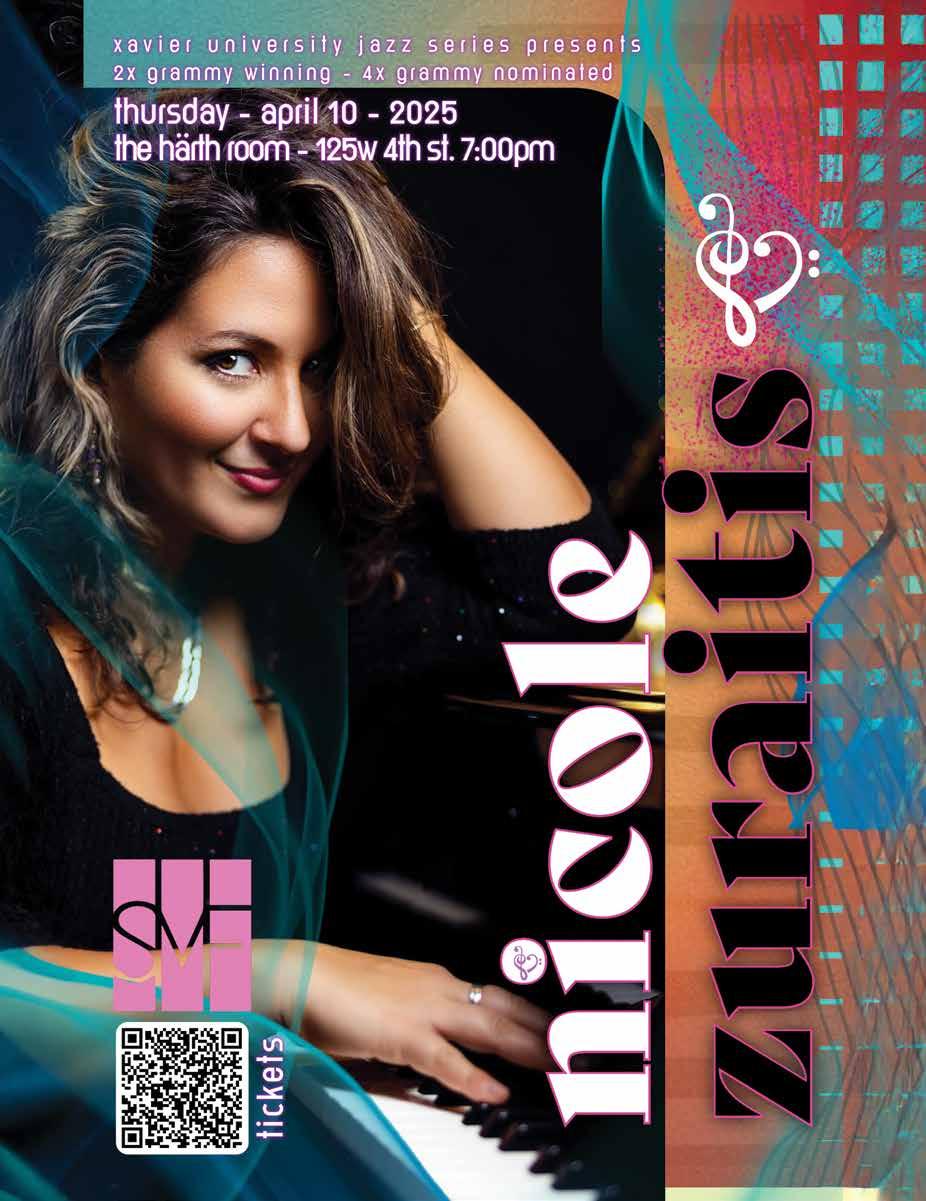
Jennifer Garner TV series 6. Served perfectly 10. Secretly adds to emails
V-shaped slit
15. Tex-Mex meal served on Tuesdays, typically 16. “Now I understand”
17. 1942 Spencer Tracy/Hedy Lamarr film
19. Sainted fifth-century pope 20. “Vanilla ___” (2001 Tom Cruise movie) 21. American of Japanese parents
DVD ancestor 23. “Magic Mike” actor Manganiello 24. “Last one in’s a rotten egg!”
28. 1972 vampire film starring William Marshall
31. 2022 Rian Johnson comedy
33. Cartoon dog voiced by John Travolta
34. Short person’s offering?
35. Senior moment?
36. Marg Helgenberger’s series
37. Gun shy?
39. “The Cask of Amontillado” author
42. “___ of Eden”
44. Article in Aachen
45. Chess piece
46. 1950 Walt Disney movie
49. Film that was erroneously awarded the 2016 Best Picture Oscar
50. Horn in a jazz combo
51. “Gonna ___ Now” (“Rocky” theme)
52. Diamond org.
53. New Zealand native
56. Trouble
59. Morales of “Mission: Impossible” movies
61. 1999 Tim Allen/Sigourney Weaver sci-fi comedy
63. “___ for Life”
64. “That meme hits home”
65. Eurasian mountains
66. Takes in
67. Eye-catching sign
68. “The Jetsons” boy
Down
1. Pantry pillagers
2. “Don’t Up” (DiCaprio satire)
3. Modest reply to a compliment
4. Make a scene?
5. Classic shoe polish brand
6. Book of legends?
7. Espresso stop
8. Bakery treats
9. Bespeckle
10. Cager Manute ___
11. Classic car named after an antelope
12. “___ bananas” (nuts)
13. Slalom slope
18. Crooked line?
23. Stick out
25. Colorado resort
26. “American Fiction” writer/director Jefferson
27. 2024 generative documentary about musician Brian
28. “Call the Midwife” channel
29. Thailand neighbor
30. Group of reliable customers
31. Smallest Indian state
32. Victory emblem
34. Prefix for mural or coastal
37. Versatility list
38. Actress Kunis
40. Have title to
41. Computer keyboard key
43. “Much ___ About Nothing”
45. “___ Misty For Me”
46. Caravan critters
47. Litigious threat
48. Split personality?
49. French crystal maker René
51. Main character on “Futurama”
54. Memorable Texas mission
55. Beasts of burden
56. Dress in
57. Scandinavian capital
58. Online craft store
60. TGIF part
61. Game winner’s cry
62. Net address
LAST PUZZLE’S ANSWERS:

